Cultural Tourism
- Living reference work entry
- Latest version View entry history
- First Online: 25 April 2023
- Cite this living reference work entry

- Shinji Yamashita 3
15 Accesses
There are two ways of defining culture which deserve attention for understanding cultural tourism. First, culture is defined anthropologically as a “way of life” including everything from food to religion. Second, there is another definition in which culture is taken in a more restricted way such as “art.” This usage was originated in the nineteenth century but is still used widely.
It is important to consider the dynamic relationship of the two definitions of culture. This is particularly the case when considering culture as a tourism resource (Yamashita 2015 ). For example, terraced rice fields in Bali, Indonesia, are seen anthropologically as part of Balinese agricultural system. However, they could become tourism resources when they attract tourists and are appreciated as a “cultural landscape.” Culture, in this way, becomes a tourism resource by transforming from local “ways of life” to an object of aesthetic consumption. In 2017, during the UNWTO’s 22nd general assembly, cultural...
This is a preview of subscription content, log in via an institution to check access.

Access this chapter
Institutional subscriptions
Beck, U., A. Giddens, and S. Lash. 1994. Reflexive modernization: Politics, tradition and aesthetics in the modern social order . Cambridge: Polity Press.
Google Scholar
Higgings-Desbiolles, F., A. Doering, and B. Bigby, eds. 2021. Socialising tourism: Rethinking tourism for social and ecological justice . London: Routledge.
Picard, M. 1996. Bali: Cultural tourism and touristic culture . Singapore: Archipelago Press.
UNWTO. 2021. Tourism and culture . https://www.unwto.org/tourism-and-culture . Accessed 27 July.
Yamashita, S. 2003. Bali and beyond: The exploration of the anthropology of tourism . New York: Berghahn.
———. 2015. The Balinese subak as world cultural heritage: In the context of tourism. In Recent developments in Bali tourism: Culture, heritage, and landscape in an open fortress , ed. I. Nyoman Darma Putra and Siobhan Campbell, 116–144. Denpasar: Buku Arti.
———. 2021. Public tourism: New forms of tourism after the Great East Japan Earthquake. In Socialising tourism: Rethinking tourism for social and ecological justice , ed. F. Higgings-Desbiolles et al., 161–174. London: Routledge.
Chapter Google Scholar
Download references
Author information
Authors and affiliations.
The University of Tokyo, Tokyo, Japan
Shinji Yamashita
You can also search for this author in PubMed Google Scholar
Corresponding author
Correspondence to Shinji Yamashita .
Editor information
Editors and affiliations.
School of Hospitality Leadership, University of Wisconsin-Stout, Menomonie, WI, USA
Jafar Jafari
School of Hotel and Tourism Management, The Hong Kong Polytechnic University, Hong Kong, Hong Kong
Honggen Xiao
Section Editor information
Department of Geography and Environmental Studies, University of Haifa, Haifa, Israel
Yoel Mansfeld Ph.D
Rights and permissions
Reprints and permissions
Copyright information
© 2023 Springer Nature Switzerland AG
About this entry
Cite this entry.
Yamashita, S. (2023). Cultural Tourism. In: Jafari, J., Xiao, H. (eds) Encyclopedia of Tourism. Springer, Cham. https://doi.org/10.1007/978-3-319-01669-6_45-2
Download citation
DOI : https://doi.org/10.1007/978-3-319-01669-6_45-2
Received : 09 March 2021
Accepted : 22 September 2022
Published : 25 April 2023
Publisher Name : Springer, Cham
Print ISBN : 978-3-319-01669-6
Online ISBN : 978-3-319-01669-6
eBook Packages : Springer Reference Business and Management Reference Module Humanities and Social Sciences Reference Module Business, Economics and Social Sciences
- Publish with us
Policies and ethics
Chapter history
DOI: https://doi.org/10.1007/978-3-319-01669-6_45-2
DOI: https://doi.org/10.1007/978-3-319-01669-6_45-1
- Find a journal
- Track your research
- EN - English
- PT - Portuguese
- ES - Spanish
- How it works
- Become a Host
- Download the app
Top Destinations
- United States
- United Kingdom
What type of experience are you looking for?
- Non-Profit School
- Permaculture project
- Eco Village
- Holistic Center
- Guest House
- How Worldpackers works

Learn from the most experienced travelers of the community
Traveling with worldpackers, planning and budgeting for travel, make a living while traveling as a lifestyle, travel with worldpackers.
- Using Worldpackers
- Work exchange
- Social impact
Plan your trip
- Women traveling
- Budget travel
- Solo travel
- Language learning
- Travel tips
- Get inspired
- Digital nomads
- Travel jobs
- Personal development
- Responsible travel
- Connect with nature
Top destinations
- South America
- Central America
- North America
- More destinations
- WP Life WP Life
- Exclusive discounts Discounts
What is cultural tourism and how to make it part of your trips
Learn all about cultural tourism and find out about amazing destinations to live cultural experiences around the world.
Worldpackers Worldpackers
Jan 08, 2024
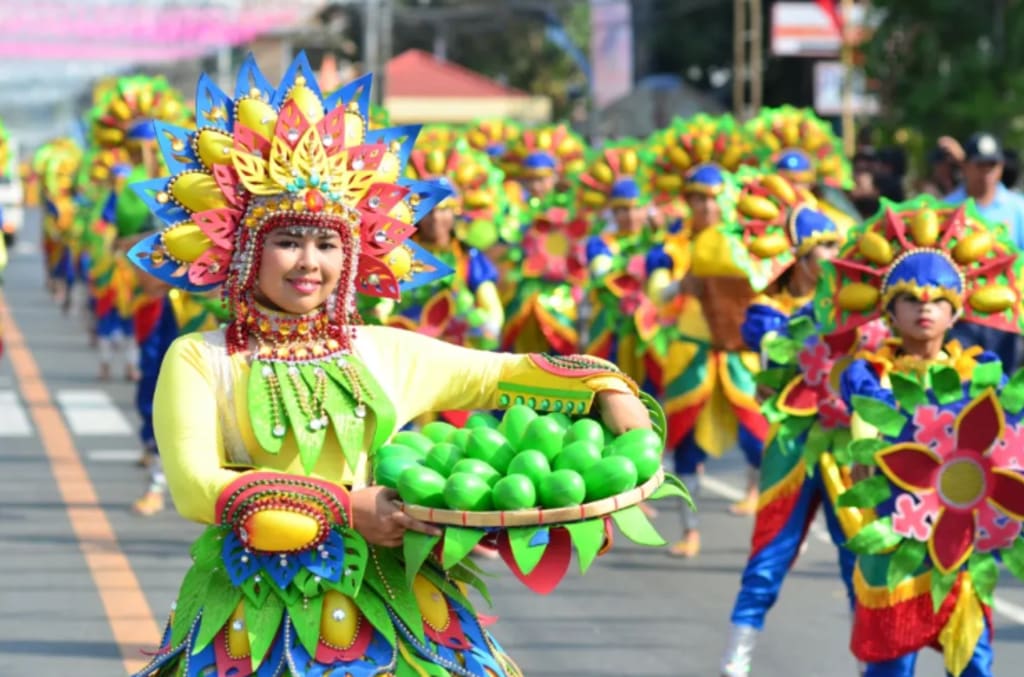
When you’re traveling, do you try to go beyond the surface and understand the different cultures that surround you? Then this article is for you. We will talk about the main characteristics of cultural tourism and will suggest 10 fascinating destinations with unique cultural aspects.
We will also tell you how you can have a deeper cultural immersion than a typical tourist , mixing with locals and learning from them while you get free accommodation.
You might also like to read:
- 20 ways to travel more intentionally
- 6 ways travel promotes learning and education
What is cultural tourism?
Cultural tourism is a form of travel that focuses on exploring and appreciating the unique traditions, history, and practices of a place . It is not just about visiting museums or attending festivals, but also delving deeply into the everyday aspects of local life. Authentic local food, local markets, and even casual chats with locals are an integral part of cultural tourism.
While a conventional tourist may seek relaxation and fun and focuses on visiting famous tourist places, the cultural tourist seeks to go beyond the superficial layer. They want to immerse themselves in local history, explore the unique customs of a region, and learn about its art and architecture. This type of experience is an opportunity to grow personally and empathize with people from different parts of the world.
Among the different types of cultural tourism, there are gastronomic tourism, rural tourism, religious tourism, ethnographic tourism, sports tourism, spiritual tourism, and voluntourism, to name a few.
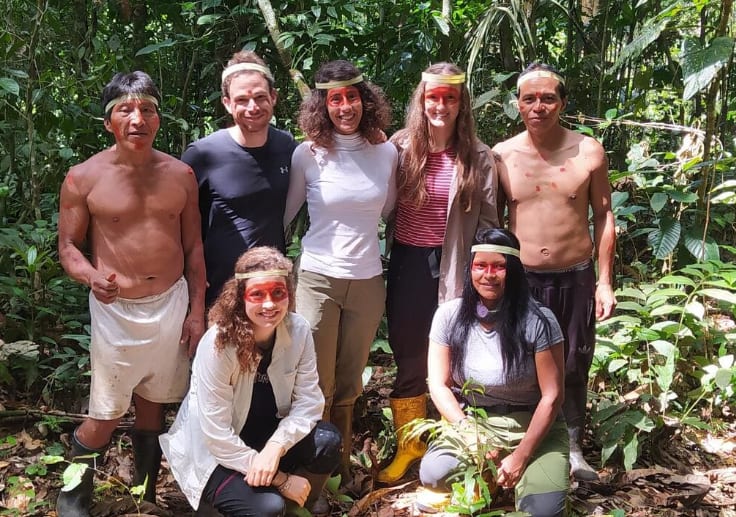
Characteristics of cultural tourism
A main characteristic of cultural tourism is the deep appreciation for different cultures . Travelers not only visit a place to see its natural or architectural beauties, but also to immerse themselves in its culture and understand it thoroughly.
Another important characteristic is the constant educational component that exists in this type of trip. You don't just learn about a new culture: you are also an active part of the cultural exchange while sharing your own customs and knowledge with local people.
Respect for cultural heritage is another indispensable condition for the cultural tourist, since not only the most famous tourist attractions are visited, but also places of great importance for local communities, such as natural sites with a strong mythology, ruins of ancient civilizations, or religious temples. They are spaces that house ancestral stories and traditions, which must be valued and preserved with the greatest care.
You might also be interested in: 5 actionable ways to live like a local while traveling
Importance of cultural tourism
Cultural tourism allows travelers to immerse themselves in the heart of a culture and learn about its history, customs, and traditions. But it's not just travelers who benefit from cultural tourism.
Local communities also have much to gain as this form of travel can be a powerful driver for local economic development. Income generated by tourism can be reinvested in community projects, helping improve infrastructure and boost local employment.
Role of the cultural traveler
When we embark on a cultural journey, we are much more than just passive spectators: we actively become respectful participants within these diverse communities. It is vital to understand that each culture has its own unique identity forged by centuries - sometimes millennia - of history.
As cultural travelers, our role is to learn and respect these differences. It is this open-mindedness that allows us to experience the intrinsic beauty of the varied ways in which humans interpret and express our existence .
Being a responsible tourist is central so that both parties can benefit from this exchange, since lack of respect or damage caused in the place visited can have irreparable consequences. Visiting a community with the sole objective of taking photos for social media, without being really interested in it, can ruin places in the long run.

10 places where you can practice cultural tourism
Cultural tourism can be practiced anywhere in the world since there are countless diverse cultures all around us. As you travel you will realize that there are many more than you thought, because even within the same country there can be dozens or even hundreds of ethnic groups with their own religion, beliefs, mythology, dialect, gastronomy and so on.
Below we will see some of the most favorable destinations for cultural tourism, but obviously the choice of where to go depends on your interests.
Kyoto, Japan
Kyoto is known as the cultural heart of Japan. With its intact Shinto shrines and ancient Buddhist temples – such as Kinkaku-ji (the Temple of the Golden Pavilion) – Kyoto offers travelers an authentic glimpse into Japan's imperial past.
Don't forget to participate in a tea ceremony and stroll through Gion, a famous geisha neighborhood full of traditional houses where the maiko learn what is necessary to become geishas.
Keep reading about Japan:
- Japan off the beaten path: discover 6 unique non-touristy destinations
- Japan on a budget: live like a local and save your dollars
- How to teach English in Japan: the easiest way

Ubud, Bali, Indonesia
Ubud is the cultural heart of Bali and a must-see destination for travelers looking to immerse themselves in the rich history and traditions of this mythical Indonesian island. This small town is surrounded by terraced rice fields, lush tropical forests and centuries-old Hindu temples that look like something straight out of a postcard.
Unlike the tourist bustle of Kuta, Canggu or Seminyak, Ubud offers a more authentic and immersive experience when exploring its surroundings. Here you can learn about Balinese customs, participate in craft workshops, or attend local cooking classes . In addition, its vibrant art scene will allow you to discover everything from traditional dances to contemporary art.
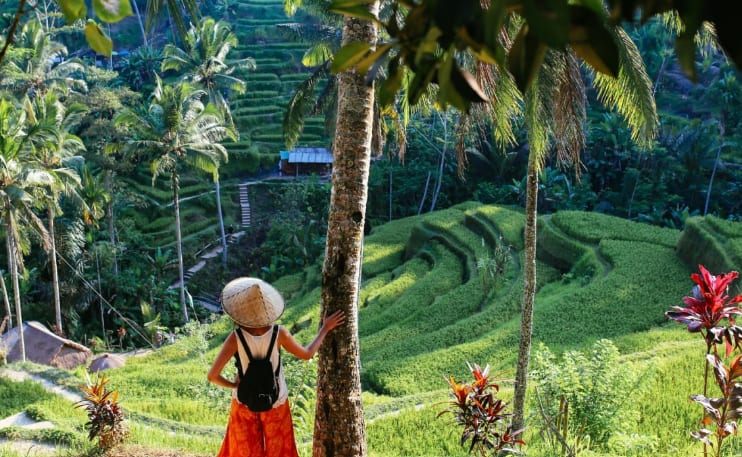
Dharamsala, India
Located in the northern region of India, Dharamsala is known for being the residence of the Dalai Lama and the center of the Tibetan government in exile . Here you can visit the Dalai Lama temple, where you can witness Buddhist ceremonies and better understand this ancient tradition.
Aside from its rich religious heritage, you will also find a fascinating mix of Indian cultures and Tibetan influences that are reflected in both local customs and cuisine. You can enjoy typical dishes such as momos (dumplings) or thukpa (a noodle soup), while interacting with the friendly locals.
Another must-see attraction is the Dhauladhar mountains that surround Dharamshala; perfect for those adventurers interested in hiking while enjoying spectacular panoramic views. There is also the unique opportunity to learn about traditional Ayurvedic medicine through educational workshops offered by local experts.
Keep reading: Discover India's top 3 best ecotourism destinations

Marrakesh, Morocco
Marrakech, in Morocco , is famous for its medina or old town, declared a World Heritage Site by UNESCO. Here you can explore labyrinths of narrow alleys filled with colorful bazaars where local artisans sell their wares.
A visit to the imposing Bahia Palace or the Saadian tombs will transport you directly to Morocco's glorious past: it’s an impressive experience of cultural tourism.
You cannot miss the opportunity to try authentic Moroccan dishes , such as couscous or a delicious tagine while enjoying the lively and hypnotizing atmosphere in Jemaa el-Fna, one of the largest and busiest markets in the world.
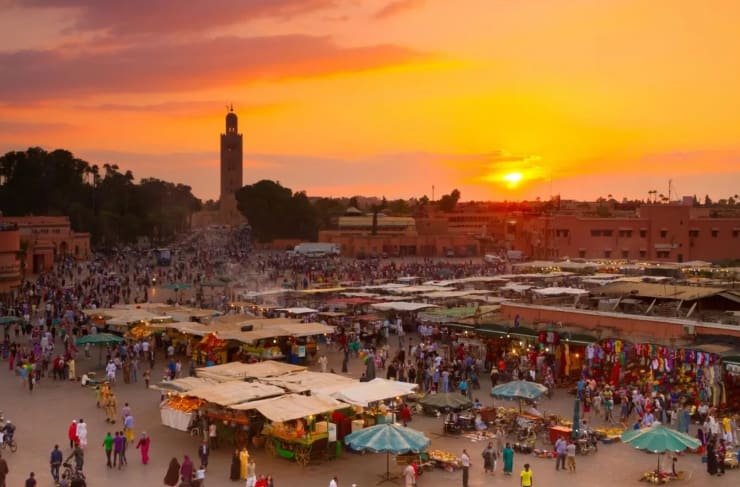
Istanbul, Turkey
Istanbul is an ideal destination for cultural tourism. This magical city is located at the crossroads between Europe and Asia, giving it a unique mix of Eastern and Western influences.
Its ancient history has left tangible traces that you can explore during your visit. From architectural wonders such as the Blue Mosque, the Topkapi Palace or the majestic Hagia Sophia to its bustling bazaars full of colors, aromas, and unique flavors.
Turkish culture has a lot to offer: its rich gastronomy with emblematic dishes such as kebab or baklava; its impressive ancestral religious traditions such as that of the dancing dervishes; and its palpable modernity in vibrant neighborhoods like Beyoğlu where contemporary art galleries coexist with bohemian cafes.
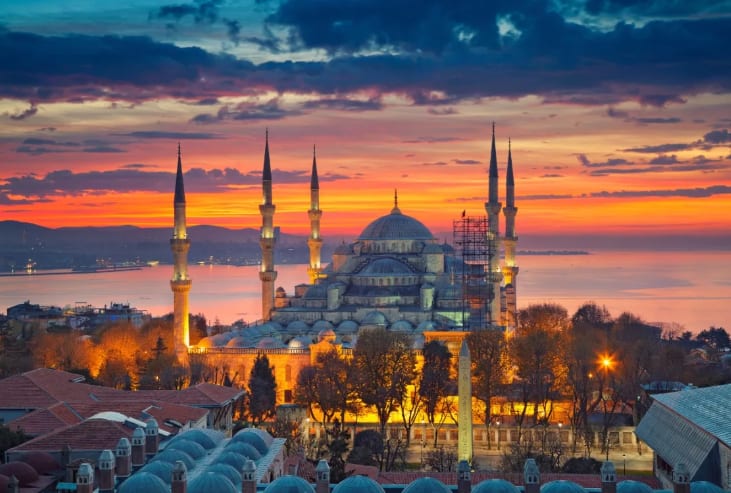
Rome, Italy
Rome, the "Eternal City", is a living museum. From the Colosseum to the Vatican, every corner tells a fascinating story about ancient Roman civilization and its impact on our society today, making it a classic destination for cultural tourism.
You can tour the ancient ruins of the Roman Forum and admire masterpieces of Renaissance art at the Vatican Museums. Every step through Rome allows you to immerse yourself deeply in its vibrant culture and rich history.
Keep reading : The 20 best places to visit in Italy
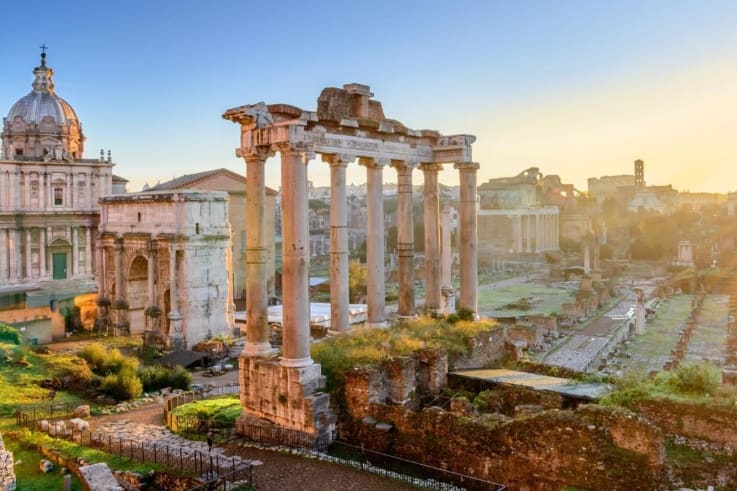
Granada, Spain
Known for its stunning Moorish architecture and charming cobblestone streets, Granada is another perfect destination for travelers looking to have a cultural tourism experience in Europe.
This Andalusian city, in the South of Spain, lies at the foot of the Sierra Nevada mountains and offers a unique mix of Moorish and Christian influences.
The Alhambra, a jewel of Islamic art with its intricate mosaics and hanging gardens, is its main tourist attraction, but there is much more in Granada. The UNESCO World Heritage neighborhood of Albayzín is full of winding streets where you can browse local shops or simply enjoy the panoramic views from one of the many viewpoints.
You also can't miss Sacromonte, famous for its gypsy caves converted into houses and even flamenco bars. Here you can experience an authentic flamenco nigh t, full of the passionate rhythm that characterizes this traditional dance from southern Spain.
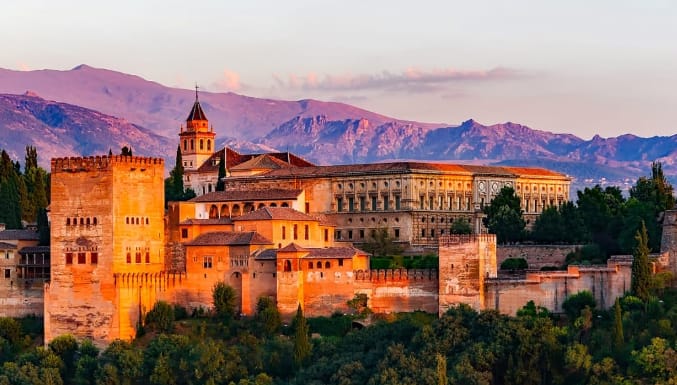
Salvador de Bahia, Brazil
Salvador is the capital of the state of Bahia and the fourth most populated city in Brazil . Founded in 1549 by the Portuguese, it was the most important center in the slave market, which over time led to an artistic culture where African expressions mixed with European and Indigenous influences.
No wonder it is one of the country’s most popular tourist destinations: it combines beautiful beaches with history, festivals, and traditions , being considered the cultural capital of Brazil.
Pelourinho is the old neighborhood of Salvador de Bahía, declared a World Heritage Site. Its cobbled streets are full of historical sites, colonial architecture, museums, restaurants, bars, hotels, musicians, and capoeira.
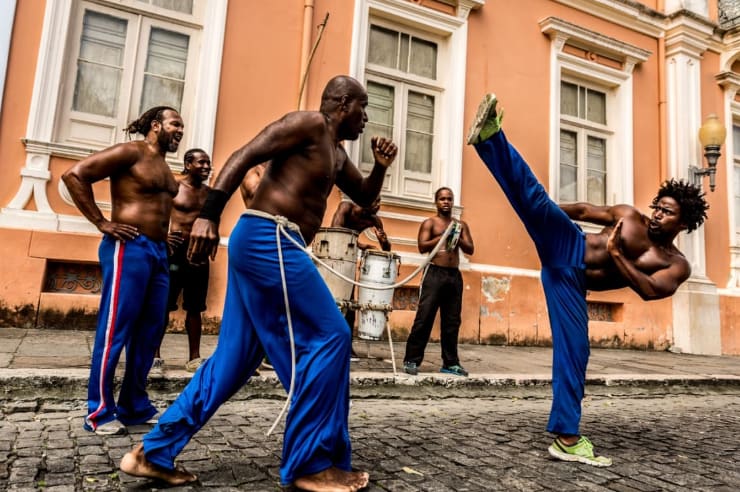
Cusco, Peru
The charm of Cusco, Peru , lies in its rich history and culture that have survived through time. This ancient Peruvian city is another perfect destination for travelers interested in cultural tourism in South America.
As the cradle of the Inca Empire, Cusco offers an unmatched experience. Here you can explore ancient Inca ruins such as the famous citadel of Machu Picchu, a must-see for any history and archeology lover.
You can also visit other historical sites such as Sacsayhuamán or Pisac. And if you are looking to immerse yourself even more in the local culture, there is nothing better than trying the exquisite Andean cuisine and participating in its colorful traditional festivals.
In addition to being a living museum full of archaeological treasures, Cusco is also known for its vibrant nightlife with numerous bars and clubs where you can enjoy folk music while mingling with locals and other international travelers.
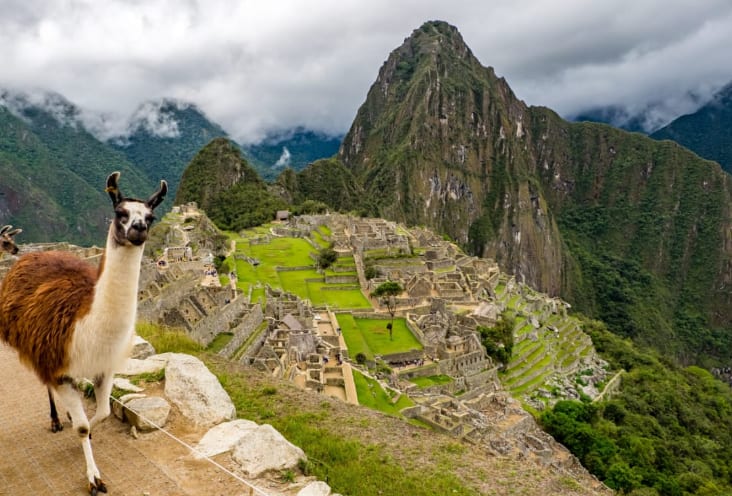
Guadalajara, Mexico
This vibrant city, known as the birthplace of mariachi, is full of history, traditions and art that reflect the richness of Mexican culture . You can stroll through the local squares where mariachi groups perform regularly or visit the famous Degollado Theater during one of its nightly shows.
But the cultural wealth of Guadalajara goes far beyond mariachi. The towns near this metropolis are famous for their impressive craft production . Tlaquepaque and Tonalá are two perfect examples: these places are full of workshops where you can watch artists work with clay, blown glass, and other ancient techniques to create wonderfully detailed pieces.
Guadalajara also offers a wealth of cultural and historical museums, as well as well-preserved colonial buildings that tell the history of Mexico . You cannot miss visiting the Hospicio Cabañas, an architectural jewel from the 19th century and a UNESCO World Cultural Heritage Site.
In addition, the city is surrounded by agave plantations, the plant that is used to produce tequila and mezcal.
You might also like : Ul timate list of the best places to visit in Mexico: the top 13
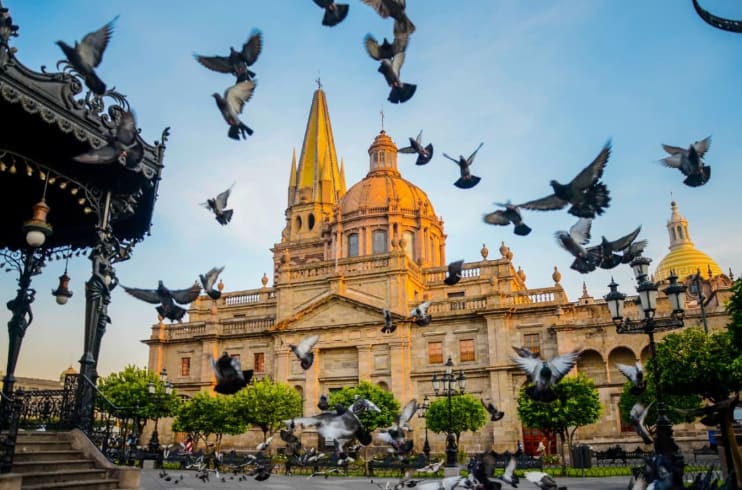
Discover different cultures with Worldpackers
An excellent way to have a true cultural immersion in the places you travel is by volunteering through Worldpackers . This platform facilitates an exchange of work for accommodation which allows for transformative and budget-friendly trips.
It’s quite simple: you lend a hand in different projects for a few hours a day , and in return you get free accommodation on site. Depending on the host, you might also get other benefits such as free meals and activities.
This type of trip is super cheap, but that’s not the best part. Volunteering with Worldpackers you can meet many people with similar interests to yours and develop new skills, such as learning a language , bartending, or bioconstruction.
From hostels in big cities to organic farms and holistic centers surrounded by nature , the possibilities are plenty. There are positions available in all of the countries mentioned in this article and much more: there are more than 140 countries available on the platform.
Keep reading :
- Collaborative tourism: what are collaborative travel relationships?
- 6 types of volunteer work abroad that give you free accommodation
- How to find volunteering opportunities around the world using Worldpackers
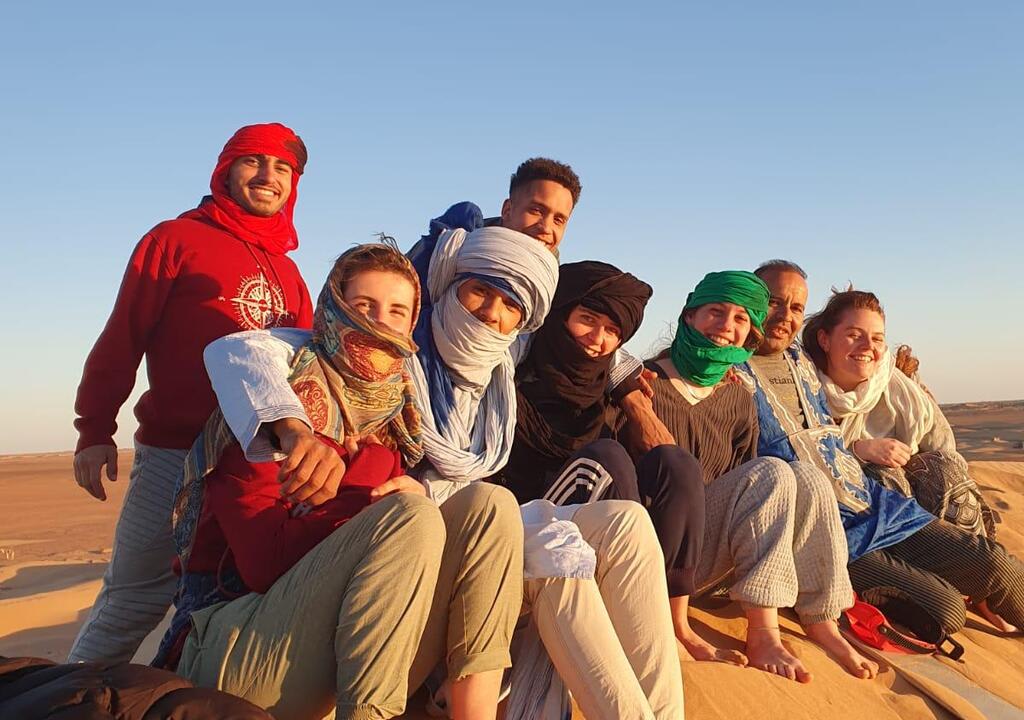
Did that spike your interest? Create a free profile on Worldpackers and start saving your favorite volunteering positions. And if you liked these tips on how to practice cultural tourism around the world, let us know in the comments section below!
Join the community!
Create a free Worldpackers account to discover volunteer experiences perfect for you and get access to exclusive travel discounts!
Worldpackers Editorial
Worldpackers.
The safest community to travel, volunteer and make a positive impact in +140 countries.
Be part of the Worldpackers Community
Already have an account, are you a host, leave your comment here.
Write here your questions and greetings to the author
Great trip!
More about this topic

What is cultural exchange and how to experience it?
The sustainable plate: tracking the origins of organic food.
Two Brothers
Volunteer trips: transform your life & impact, how do worldpackers trips work.
As a member, you can contact as many hosts and travel safely as many times as you want.
Choose your plan to travel with Worldpackers as many times as you like.
Complete your profile, watch the video lessons in the Academy, and earn certificates to stand out to hosts.
Apply to as many positions as you like, and get in contact with our verified hosts.
If a host thinks you’re a good fit for their position, they’ll pre-approve you.
Get your documents and tickets ready for your volunteer trip.
Confirm your trip to enjoy all of the safety of Worldpackers.
Have a transformative experience and make a positive impact on the world.
If anything doesn’t go as planned with a host, count on the WP Safeguard and our highly responsive support team!
After volunteering, you and your host exchange reviews.
With positive reviews, you’ll stand out to hosts and get even more benefits.
Who’s a tourist? How a culture of travel is changing everyday life
Professor of Sustainable Tourism and Director Griffith Institute for Tourism, Griffith University
Disclosure statement
Susanne Becken does not work for, consult, own shares in or receive funding from any company or organisation that would benefit from this article, and has disclosed no relevant affiliations beyond their academic appointment.
Griffith University provides funding as a member of The Conversation AU.
View all partners
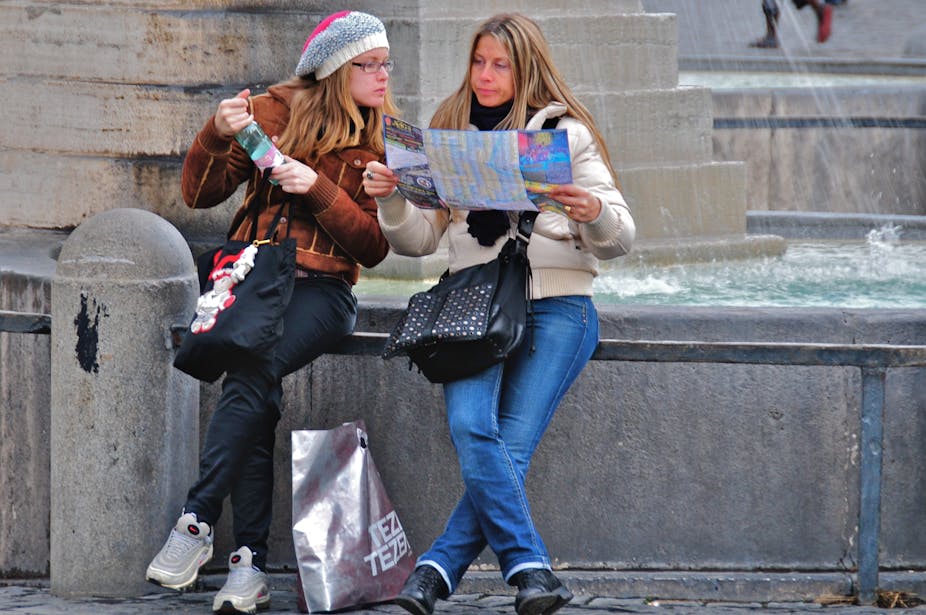
Every year, on September 27, the global tourism community celebrates World Tourism Day . This year’s theme is about community development and how tourism can contribute to empowering people and improve socio-economic conditions in local communities.
But who are the people who might visit “communities” and what does it mean – these days – to be a tourist?
There are many tourist stereotypes – an overweight Westerner in shorts with a camera dangling around their neck, or maybe a trekking-shoed backpacker hanging out in the Himalayas. Many people think of “tourism” and “holidays” as distinct times of the year when the family travels to the seaside or the mountains.
World Tourism Day is an opportunity to discuss how much more encompassing the phenomenon of tourism is than most people might think.
What is a tourist?
People are more often a “tourist” than they realise. The United Nations World Tourism Organisation broadly defines a tourist as anyone travelling away from home for more than one night and less than one year. So, mobility is at the core of tourism.
In Australia, for example, in 2013 75.8 million people travelled domestically for an overnight trip – spending 283 million visitor nights and $51.5 billion.
Reasons for travel are manifold and not restricted to holidays, which makes up only 47% of all domestic trips in Australia. Other reasons include participation in sport events, visiting a friend or relative, or business meetings.
Some of the most-visited destinations in the world are not related to leisure but to other purposes. For example, pilgramage tourism to Mecca (Saudi Arabia) triples the population from its normal 2 million during the Hajj period every year.
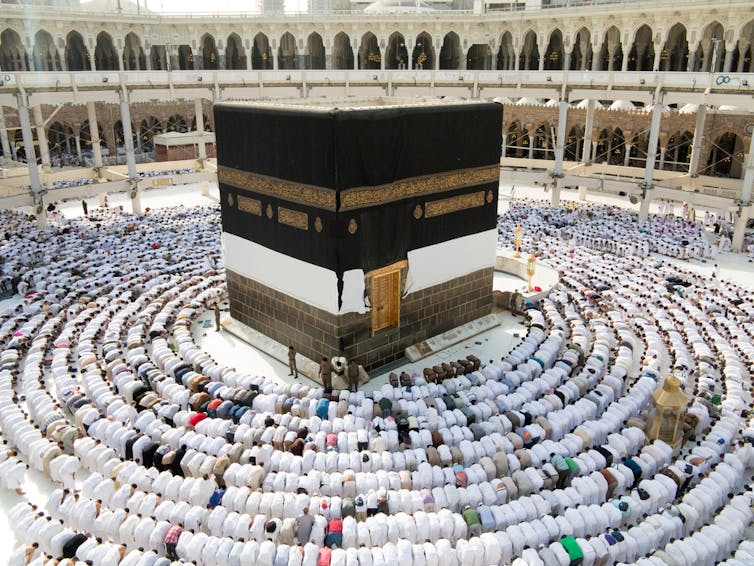
Travel, work and leisure: what’s the difference?
Tourists are not what they used to be. One of the most pervasive changes in the structure of modern life is the crumbling divide between the spheres of work and life. This is no more obvious than in relation to travel. Let me test the readers of The Conversation: who is checking their work emails while on holiday?
A recent survey undertaken in the US showed that 44.8% of respondents check their work email at least once a day outside work hours. Further, 29.8% of respondents use their work email for personal purposes.
Post-modern thinkers have long pointed to processes where work becomes leisure and leisure cannot be separated from work anymore. Ever-increasing mobility means the tourist and the non-tourist become more and more alike.
The classic work-leisure divide becomes particularly fluid for those who frequently engage in travel, for example to attend business meetings or conferences. Conferences are often held at interesting locations, inviting longer stays and recreational activities not only for participants but also for spouses and family.
Further, city business hotels increasingly resemble tourist resorts: both have extensive recreational facilities such as swimming pools and spas, multiple restaurants and often shopping opportunities (e.g. Marina Bay Sands, Singapore ). And, of course, they offer internet access – to be connected to both work and private “business”.
Understanding how people negotiate this liquidity while travelling provides interesting insights into much broader societal changes in terms of how people organise their lives.
For some entrepreneurial destinations these trends have provided an opportunity; namely the designation of so-called dead zones – areas where no mobile phone and no internet access are available. Here the tourist can fully immerse in the real locality of their stay.
Fear of missing out
The perceived need to connect virtually to “friends” (e.g. on Facebook) and colleagues has attracted substantial psychological research interest, with new terms being coined such as FOMO (fear of missing out) addiction, or internet addiction disorder.
A recent Facebook survey found that this social media outlet owes much of its popularity to travel – 42% of stories shared related to travel. The motivations for engaging in extensive social media use and implications for tourism marketing are an active area of tourism research.
Thus, understanding why and what people share while travelling (i.e. away from loved ones, but possibly earning important “social status” points) might provide important insights into wider questions of social networks and identity formation, especially among younger people.
Tourism and emigration
The increasingly global nature of networks has been discussed in detail by sociologist John Urry and others. They note the growing interconnectedness between tourism and migration, where families are spread over the globe and (cheap) air travel enables social networks to connect regularly.
As a result, for many people local communities have given way to global communities, with important implications for people’s “sense of place” and resilience. The global nature of personal networks extends to business relationships where the degree to which one is globally connected determines one’s “network capital”.
Urry also noted that mobility has become a differentiation factor between the “haves” and “have nots”, with a small elite of hypermobile “connectors”. Thus travel and tourism sit at the core of a potentially new structure of leaders and influential decision makers.
The global ‘share economy’
Engaging in this global community of tourists is not restricted to those who travel actively. The so-called Share Economy , where people rent out their private homes (e.g. AirBnB), share taxi rides or dinners, has brought tourism right into the living rooms of those who wish to engage with people who they may not meet otherwise.
Potentially this parallel “tourism industry” provides a unique opportunity for bringing people together and achieving peace through tourism (see International Institute for Peace through Tourism ). A whole new area for research travellers, “guests and hosts” and their economic impacts, is emerging.
In a nutshell, tourism is much more than the service industry it is usually recognised for, both in practice and as a field of academic enquiry. Tourism and the evolving nature of travellers provide important insights into societal changes, challenges and opportunities. Engaging with tourism and travel also provides us with an excellent opportunity to better understand trends that might foster or impede sustainable development more broadly.

Project Offier - Diversity & Inclusion

Senior Lecturer - Earth System Science

Sydney Horizon Educators (Identified)

Deputy Social Media Producer

Associate Professor, Occupational Therapy
- Switch skin
What is Cultural Tourism and Why is It Important?

Tourism trends come and go. What was once deemed as a necessity in travel and tourism may not be a necessity today. So what is cultural tourism and why is it important? Let’s dive in!
How is Culture Defined?
In order to understand cultural tourism, we must first understand what constitutes culture.
Culture is rooted in many complexities and many inner workings. On the surface level, culture can be defined through symbols, words, gestures, people, rituals and more.
However, the core of culture is in its values.
The way a culture perceives itself or stays preserved is through a set of shared values.

Maybe its an ode to ancestry and tradition or a new breadth of
However, the core of culture is in its values.
Whether it’s an ode to ancestry or creating a new set of values as time evolves, it can be also be held true to the
Whether it’s an ode to ancestry or creating a new set of values as time evolves, cultural tourism is uprooted in holding and preserving cultures through traditions and heritage. [1]

What is Cultural Tourism?
Adopted by the UNWTO General Assembly in 2017, Cultural Tourism is defined as the following: “A type of tourism activity in which the visitor’s essential motivation is to learn, discover, experience and consume tangible and intangible cultural attractions/products in a tourism destination.”
The main aim of cultural tourism is to improve the quality and livelihood of the local people who are committed to preserving cultural heritage and traditions.
This can be through the purchase of locally made goods, initiatives through local food and the learning of recipes,
This can be through the purchase of locally made goods, initiatives to learn how to cook local recipes and supporting local inbound operators who have a good knowledge of the cities they are operating in.
This can be done through the following six aspects:
- Handcrafted Goods and Visual Art
- Social Practices
- Rituals and Festive Events
- Oral Traditions
Imagine visiting one of our destinations: Jordan, Tunisia, Kyrgyzstan, Uzbekistan or Tanzania.
Imagine being able to experience all six of these aspects of cultural tourism all created in one package.
Where Can You Practice Cultural Tourism?
Jordan .
From the North to the South, Jordan’s landscapes and its people are ready to welcome you to each and every experience.
In the North, experience the gastronomy of locally preserved recipes and take your hand at being able to learn how to cook yourself.
Take your hand at handcrafted goods like making baskets out of wheat straws or learn the art of traditional weaving in Madaba.
In the South, practice in rituals in the desert by learning about the infamous Bedouin tea, take some words and practices that are so pertinent to those in the South.
See our packages in Jordan
Underground colonies, history and a rich culture are just waiting for you to learn about.
Visit an artist in Gabes who has taken traditional methods of papermaking and carried it to the present today by honoring raw and organic materials pertinent to the atmosphere of Tunisia’s landscape.
Then have an opportunity to stay in local accommodation in underground colonies which stay cool during the summer and warm in the winter.
You can also experience Amazigh history and the different languages present in Tunisia today that trace back to civilizations many years ago.
See our packages in Tunisia
Uzbekistan
One of Central Asia’s unknown wonders
Uzbekistan is located on the Silk Road and holds centuries of history that trace back to the Islamic Golden Age. It holds a unique architectural background and since it holds history between the Persian Empire and the Soviet Union, you can see a contradiction between both styles, all in one place.
See our packages in Uzbekistan
Kyrgyzstan
Where nature is a non-negotiable
With its beautiful nature, with over 2,000 lakes, Kyrgyzstan is another Central Asian wonder that holds beautiful fairytale naturescapes and semi-nomadic living.
Kyrygz people still adhere to ancient civilizations and honor their ancestors by living in Yurts and sharing natural practices such as horseback riding and traditional old games, like Kok Boro and eagle hunting.
See our packages in Kyrgyzstan
Everything is “pole pole” in Tanzania
From visiting indigeneous tribes to participating in rituals to mother nature, Tanzanian people practice the “pole pole” lifestyle, which means slowly slowly in Swahili.
With an intersection of different cultures and practiced rituals, Tanzania has become such a hub for many people to get together and enjoy the lifestyle and indigenous cultures.
See our packages in Tanzania
Why is Cultural Tourism Important?
Cultural tourism is a travel and tourism trend that is here to stay. With more and more accessibility to the world and the people in it, there is peak interest in being able to immersively travel.
- Peaks an interest to immerse yourself in a particular culture
- Creates meanings, stories and understanding between host and guest
- Share cultural practices and be part of the preservation of cultural heritage
- Gain a full understanding a culture without commodification
What better way to honor a destination than by practicing in allowing something to be immortal.
Also, if you’re interested in learning more about experiential tourism, check out this article.
What are some cultural touristic experiences you are looking forward to trying?
Sri Lanka Weather by Month! Hit or Miss? We have All the Details!
Food in kyrgyzstan: a list of the best kyrgyz cuisine, a complete list of what to do in tunisia, 10 things to do in vietnam: from food to adventure, 10 unique things to do in aqaba – jordan, we have all of your questions answered to kyrgyzstan hiking and trekking, top 10 places to go in the winter, what are the best times to visit jordan, related articles.

Kyrgyzstan Travel Guide 2023 – Unique Activities to Do in Kyrgyzstan

Best Tourist Places in Sri Lanka You Need to Visit!

Cultural Tourism: Definitions, Types, Advantages & Disadvantages, or Stakeholders of Cultural Tourism
Cultural tourism is a rapidly growing segment within the global travel industry, catering to individuals seeking to immerse themselves in local populations’ customs, traditions, and lifestyles. It combines the elements of leisure with an authentic experience of a destination’s unique historical, architectural, artistic, and culinary aspects. As a result, this form of tourism allows travellers to gain a deeper appreciation and understanding of different societies and their cultural characteristics.
In recent years, the demand for cultural tourism has been on the rise as more people are interested in exploring foreign customs and cultural experiences beyond the typical tourist attractions. This trend fosters cross-cultural connections and mutual understanding and creates positive economic and social impacts on local communities. By preserving and showcasing their traditions, local people have the opportunity to generate income and employment while maintaining a sense of pride in their cultural heritage.
With the increasing focus on sustainability and responsible tourism practices, cultural tourism sets itself apart by emphasizing the importance of engaging with local communities, adhering to ethical standards and minimizing negative impacts on the environment. As such, it presents a viable option for tourists who wish to expand their horizons while also contributing positively to the places they visit.
Table of Contents
Understanding cultural tourism.

Cultural tourism is a significant and growing aspect of the global tourism industry. The United Nations World Tourism Organization (UNWTO ) defines cultural tourism as the movement of people to cultural attractions away from their normal residence, with the intention of gathering new information and experiences that satisfy their cultural needs. It encompasses various activities undertaken by tourists to explore and experience different cultures, customs, and traditions.
One of the key aspects of cultural tourism is the opportunity it provides visitors to learn and engage with local communities, their history, and their way of life. This tourism is more than just visiting heritage sites or attending cultural events; it involves understanding and experiencing how people from different cultures live, express themselves through art, and maintain their traditions.
Cultural tourism fosters mutual understanding and respect between people from different cultural backgrounds. It encourages dialogue and exchange, breaking down social and cultural barriers and contributing to more tolerant societies. This form of tourism is an essential aspect of sustainable tourism development, as it seeks to preserve precious heritage for future generations while supporting economic growth for local communities.
As the tourism industry continues to grow, the demand for unique and authentic experiences increases. Cultural tourism serves to meet this demand by offering visitors the opportunity to immerse themselves in various cultural settings, fostering a deeper understanding of the world and its diverse cultures.
Importance of Cultural Tourism
Cultural tourism plays a significant role in society as it helps preserve and promote the values, beliefs, traditions, and heritage that define a particular culture. It allows individuals and communities to exhibit unique perspectives on arts, rituals, folklore, music, literature, language, oral traditions, and other cultural elements. Cultural tourism serves as a bridge between societies, aiding in fostering mutual respect, tolerance, and understanding among various cultures.
Economic benefits are also apparent through cultural tourism. Visitors contribute to the local economy, supporting local businesses and sustaining host communities’ cultural products and experiences. By engaging in cultural tourism, visitors gain an authentic understanding of indigenous and local cultures, empowering them to appreciate the rich diversity and uniqueness of the world.
Furthermore, cultural tourism helps preserve cultural heritage, vital for maintaining a sense of identity and continuity for future generations. This preservation and promotion of different cultures provide a sense of pride and belonging for people who are part of those traditions. In turn, this enhances cultural exchange, allowing individuals to learn about other ways of life while appreciating their values and beliefs.
Cultural tourism also supports the sustainability of performing arts and other creative industries. Through various interactions with artists and performers, visitors can develop an appreciation for a wide range of artistic expressions, contributing to the overall vitality of the art world.
Through the development of cultural tourism, a society can showcase its cultural heritage while contributing to its economic prosperity. By embracing the importance of cultural tourism, we can foster a greater understanding, appreciation, and celebration of the rich tapestry of customs, beliefs, and traditions that make up the world’s diverse cultures.
Types of Cultural Tourism

Cultural tourism allows travellers to immerse themselves in the history, heritage, and traditions of different places around the world. This form of tourism can be categorized into several types, each offering a unique way for visitors to experience and appreciate local cultures.
One type of cultural tourism is Historical and Heritage Tourism . This focuses on exploring sites related to a region’s past, such as ancient archaeological sites, monuments, and museums. It can instil a sense of wonder and appreciation for past civilizations’ achievements and teach travellers about the history of the places they visit.
Moving to the artistic side, Arts Tourism highlights the creative aspects of a culture. Tourists visit galleries, theatres, and concerts to experience local art, music, dance, and drama. It allows them to understand different communities’ aesthetic and expressive tendencies, opening their minds to new perspectives and forms of creativity.
Religious and Spiritual Tourism is another common form, where tourists visit religious sites, such as temples, churches, and mosques, or engage in spiritual practices like meditation and yoga. This type of cultural tourism can provide insights into various societies’ belief systems and rituals, fostering understanding and tolerance among people of different faiths.
However, culture isn’t just about history, arts, and religion but also daily life. Ethno and Indigenous Tourism involves tourists visiting and interacting with indigenous communities to learn about their customs, way of life, and unique perspectives on the world. This type of cultural tourism encourages empathy and cross-cultural understanding while emphasising respect for indigenous people’s rights and dignity.
Lastly, Culinary and Agritourism put emphasis on local food and drink traditions, as well as the agricultural practices that underpin them. This type of tourism can include attending food festivals, partaking in cooking classes or workshops, and visiting farms, vineyards, or breweries. Culinary experiences help tourists understand the richness of a region’s flavours and the relationship between local communities and their land and resources.
In summary, cultural tourism comes in various forms, appealing to different interests and tastes. It offers travellers a chance to explore and interact with diverse cultures, fostering connections and understanding among people around the world.
Forms of Cultural Tourism
Cultural tourism offers a wide range of experiences for travellers who seek to immerse themselves in different cultures, traditions, and ways of life. Various forms of cultural tourism cater to different interests and preferences.
Museums and galleries play a significant role in cultural tourism as they showcase a certain location’s history, art, and culture. Examples include art galleries displaying local and international masterpieces and museums featuring exhibits about the history and development of a specific region or theme.
Monuments and historic sites attract cultural tourists interested in exploring the past. Famous landmarks, archaeological sites, and heritage buildings tell the stories of civilizations and cultures that once thrived. UNESCO World Heritage Sites are often at the top of travellers’ lists, representing the world’s most significant cultural and natural heritage.
Architecture as a form of cultural tourism exposes tourists to varying architectural styles and meanings. Walking tours, cityscapes, and visits to iconic buildings provide a deeper understanding of a city’s architectural design’s cultural, social, and political influences.
Festivals and special events are another important aspect of cultural tourism, highlighting a particular community’s local customs and practices. These may include carnivals, parades, performances, traditional dances, and food festivals that provide a unique insight into the cultural identity of a place.
Gastronomy and cuisine play an integral role in the cultural tourism experience, as they allow tourists to savour the flavours and ingredients unique to a location. Local markets, food tours, cooking classes, and traditional restaurants all offer opportunities to appreciate the culinary heritage of a destination.
Shopping for crafts and textiles is a popular form of cultural tourism, as it allows travellers to bring home tangible memories of their journeys. Local artisans may showcase their talents through handmade textiles, pottery, jewellery, and other crafts, reflecting their community’s cultural heritage and artistic expression.
Cultural tourism encompasses diverse experiences, enabling travellers to engage with their chosen destination’s rich history, art, architecture, events, cuisine, and crafts. By exploring these varied aspects, visitors can deepen their understanding and appreciation of the world’s unique cultural landscapes.
Tangible and Intangible Cultural Attractions

Cultural tourism often focuses on two major aspects: tangible and intangible cultural attractions. These attractions shape a destination’s identity, providing depth and context for visitors and facilitating cultural exchange. This section will explore various facets of tangible and intangible attractions, comprehensively understanding their significance and diversity.
Tangible cultural attractions encompass elements of history, arts, and architecture that visitors can physically experience. Notable examples include monuments, visual art, and crafts that showcase local communities’ unique skills and traditions. Such attractions often reflect centuries of evolution and showcase the ingenuity of a region’s inhabitants. By visiting these sites and engaging with these art forms, travellers gain firsthand insights into the cultural heritage of their destination.
On the other hand, intangible cultural attractions comprise the non-material aspects of a culture that contribute to its unique characteristics and traditions. Music, social practices, festive events, and customs are some of the intangible elements that enrich the cultural landscape of a tourist destination. Interaction with local people plays a crucial role in understanding the region’s intangible cultural attractions, as they act as custodians of these traditions and their oral histories.
A dynamic interplay exists between tangible and intangible cultural attractions, creating a vibrant, multi-dimensional experience for tourists. For instance, the physical structure in architectural landmarks represents the tangible aspect, while the stories, legends, and rituals connected to the site contribute to its intangible allure. This symbiotic relationship reflects the essential interdependence between culture’s material and immaterial aspects.
In conclusion, tangible and intangible cultural attractions are indispensable pillars of cultural tourism. They provide an enriching experience for visitors and play a vital role in preserving and promoting a destination’s unique cultural heritage. Both aspects should be regarded with equal importance and cultivated to ensure a comprehensive and engaging experience for travellers seeking to explore a destination’s cultural offerings.
Advantages of Cultural Tourism
Cultural tourism provides a unique opportunity for individuals to immerse themselves in a particular society’s history, traditions, and customs. In doing so, they can develop a deeper understanding and appreciation of the diverse cultures that make up the world.
One significant advantage of cultural tourism is its potential to boost local economies. Tourist expenditures in local businesses such as hotels , restaurants, and shops can contribute to the growth and development of a region. Additionally, cultural tourism can create jobs, especially for local artisans, performers, and guides who offer authentic cultural experiences to visitors.
Another benefit of cultural tourism is the preservation and revitalization of cultural heritage. By attracting tourists interested in learning about and experiencing different traditions, communities are encouraged to preserve and maintain their cultural assets, such as historic sites, museums, and festivals. This helps ensure that future generations can continue to enjoy and learn from these valuable resources.
Cultural tourism also fosters cross-cultural understanding and appreciation. As people engage with diverse cultures, they may develop a broader perspective and a greater respect for cultural differences. This can lead to increased tolerance and harmony among different societies.
However, it is important to be aware of the potential disadvantages of cultural tourism. For instance, there may be issues related to overcrowding, environmental impact, or the commodification of cultural traditions. This makes it crucial to manage cultural tourism responsibly, ensuring it benefits both the tourists and the host communities.
Disadvantages of Cultural Tourism
Cultural tourism has gained popularity in recent years, drawing visitors from around the globe to experience and appreciate diverse cultures. However, this type of tourism also brings several disadvantages that must be considered.
One significant drawback of cultural tourism is the potential for commodification of cultures. As communities open their doors to tourists, they risk losing the authenticity and uniqueness of their cultural identity. Traditional practices and artefacts may be tailored to appeal to the tourist market, diluting their cultural significance.
Moreover, cultural tourism can put pressure on resources and spaces used by local communities. The influx of tourists may lead to overcrowding and increased competition for essential amenities. This could negatively impact the quality of life for local residents and strain the available infrastructure.
Another issue is the potential for environmental degradation resulting from cultural tourism. Some tourist activities may involve access to sensitive natural areas, leading to erosion, pollution, or disturbance of wildlife habitats. The construction of tourist facilities and infrastructure can also threaten the environment.
Lastly, cultural tourism can contribute to the unequal distribution of economic benefits. While some members of the community may profit from tourism-related businesses, others may not be able to participate in or benefit from these enterprises. This could exaggerate income disparities and create economic imbalances within communities.
In conclusion, despite cultural tourism’s numerous benefits to travellers and host communities, it is crucial to acknowledge and address its potential negative aspects. To ensure the long-term success of cultural tourism, policies and practices must be implemented that prioritize the protection of cultural and environmental resources and promote equitable distribution of economic benefits.
Cultural Tourism Destinations

Cultural tourism is a popular type of travel that allows visitors to immerse themselves in various destinations’ history, heritage, and traditions. Throughout the world, numerous places provide rich cultural experiences for travellers. Here, we explore a few notable cultural tourism destinations.
China is a vast and diverse country with a history dating back thousands of years. One can explore the architectural wonders of the Great Wall, the Terracotta Army in Xi’an, or the magnificent Forbidden City in Beijing. Visiting local markets and trying traditional cuisine also adds to the cultural experience in China.
India is another top destination for cultural tourism, offering many historical sites and vibrant traditions. The Taj Mahal in Agra, a UNESCO World Heritage Site, is a must-see with its iconic marble mausoleum. Another popular destination is Rajasthan , where the colourful cities and the royal palaces, such as the spectacular City Palace of Jaipur, offer a glimpse into the past.
France , specifically Paris , provides visitors with rich art, architecture, and cuisine. Iconic sites such as the Louvre, Notre Dame Cathedral, and the Eiffel Tower showcase the country’s artistic and architectural achievements throughout history.
Similarly, Spain is renowned for its rich cultural heritage with attractions such as the Alhambra in Granada, the Park Güell in Barcelona, designed by Gaudí, and the Prado Museum in Madrid.
Turkey , especially Istanbul , offers an intricate blend of European and Asian influences, with historic sites such as the Hagia Sophia, the Blue Mosque, and the Topkapı Palace. Moreover, the open-air bazaars and Turkish baths deliver an authentic cultural experience.
Italy , the birthplace of the Renaissance, is brimming with artistic and architectural masterpieces. Cities like Rome, Florence, and Venice are steeped in history, allowing visitors to marvel at landmarks like the Colosseum, St. Peter’s Basilica, or the Uffizi Gallery.
The beautiful island of Bali in Indonesia is known for its lush landscapes, Hindu temples, and vibrant arts scene, making it an excellent location for immersing oneself in the culture of the region.
Uzbekistan has gained attention recently as tourism grows along the Silk Road route. Visitors can admire the stunning architecture and mosaics of cities such as Samarkand, Bukhara, and Khiva, which capture the rich heritage of the ancient trading route.
In conclusion, cultural tourism invites travellers to explore fascinating destinations across the globe. While each location offers unique experiences, they provide a deeper understanding of human history, traditions, and heritage.
Stakeholders of Cultural Tourism
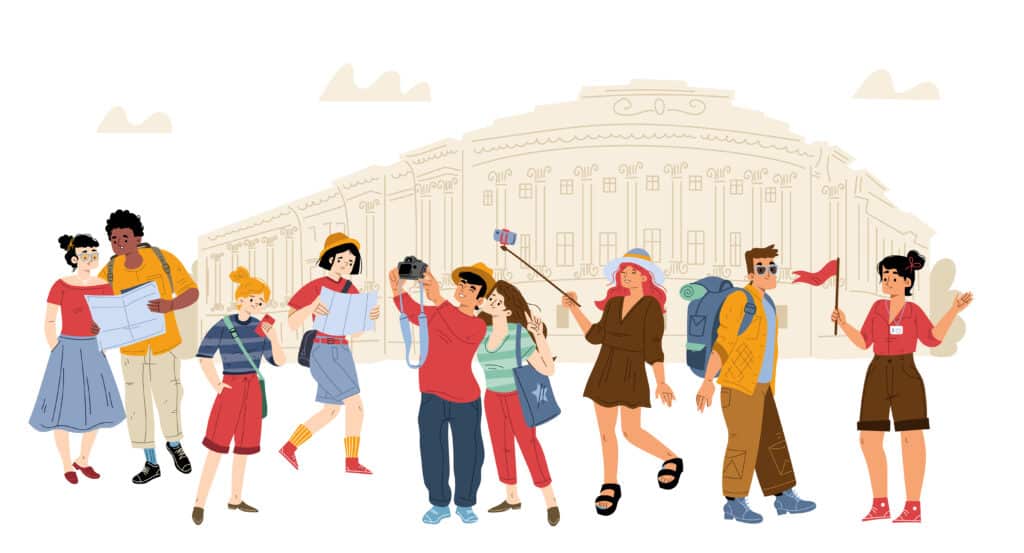
Cultural tourism is a multi-faceted industry that brings value to travellers in search of authentic experiences and to a myriad of stakeholders. From local communities to government bodies and from small businesses to environmental conservation efforts, cultural tourism can shape economies and lifestyles in both positive and negative ways. This guide delves into the key stakeholders in the cultural tourism sector, exploring their roles, impacts, and interconnected interests.
Tourists: The Heart of the Industry
Arguably, tourists are the backbone of cultural tourism. Whether they are history enthusiasts seeking out ancient ruins or gastronomes on the hunt for authentic local cuisine, tourists drive demand and shape the landscape of the tourism industry. They often seek enriching experiences that can offer a deep understanding of local cultures.
Local Communities: The Soul of the Destination
Local communities provide the lived experience that many cultural tourists seek. These people preserve the traditions, language, and heritage sites that form the basis of cultural tourism. Unfortunately, they can also bear the brunt of poorly managed tourism through cultural commodification and environmental degradation.
Government Bodies: The Framework Providers
Local and national governments play an instrumental role in regulating and promoting cultural tourism. They invest in infrastructure, enforce zoning laws, and facilitate public services like safety and sanitation that are vital to the tourism industry.
Tourism Boards and Agencies: The Promoters
Tourism boards, often funded by governments, are responsible for marketing a destination’s cultural assets to the world. These bodies work closely with other stakeholders to develop tourism packages, advertise local attractions, and even set guidelines for responsible tourism.
Tour Operators and Travel Agents: The Experience Curators
Specializing in delivering personalized experiences, these businesses are intermediaries between tourists and destinations. They can make or break the quality of the cultural tourism experience through their choices of local partnerships, itineraries, and guides.
Cultural Institutions: The Keepers of Heritage
Museums, art galleries, and historical sites are essential touchpoints for cultural tourists. They collaborate closely with various stakeholders to ensure that cultural assets are preserved and made accessible to the public.
Artisans and Performers: The Artistic Impressions
Artisans and performers add texture to the cultural fabric of a destination. These stakeholders benefit from increased visibility and economic opportunities , providing tourists a gateway to the authentic local culture.
Small Business Owners: The Local Economy Boosters
From restaurants and cafes to souvenir shops, small businesses see a surge in revenue when cultural tourism is thriving. They form a vital part of the local economy, providing services that enrich the tourist experience.
Academics and Researchers: The Thought Leaders
Cultural tourism is a field ripe for academic inquiry, touching upon anthropology, economics, and sociology disciplines. Research in this area can help shape policies that benefit tourists and local communities.
NGOs: The Advocates of Sustainability
Organizations that focus on cultural or environmental conservation often align with the interests of responsible cultural tourism. They act as watchdogs and advocates, ensuring that tourism practices are sustainable and ethical.
Real Estate Developers: The Infrastructure Builders
Though not directly related to the culture, real estate is essential in accommodating the influx of tourists, especially in booming destinations. They must balance business interests with responsible development.
Media: The Influencers
Media outlets, including travel bloggers and journalists, have a significant role in shaping public perception of a destination. Their storytelling can amplify the benefits or expose the pitfalls of cultural tourism.
The Environment: The Unspoken Stakeholder
Although not a traditional “stakeholder,” the environment stands to be significantly affected by tourism activities. Sustainable practices must be adopted to preserve the natural and cultural landscapes that attract visitors in the first place.
Understanding the intricate web of stakeholders in cultural tourism is the first step in creating an industry that benefits all. As cultural tourism evolves, stakeholders must actively dialogue to ensure sustainable and enriching experiences for everyone involved.
Cultural Tourism Experience
Cultural tourism experiences provide a unique opportunity for travellers to immerse themselves in the local culture, customs, and traditions of the places they visit. These immersive travel experiences enable tourists to understand the heritage and identity of the communities they encounter.
One popular way to experience cultural tourism is through homestays. These accommodations offer the chance to live with a local family, providing a firsthand glimpse into their daily lives and customs. The cultural exchange within a homestay environment can be transformative, offering insights that would otherwise remain veiled during a typical sightseeing vacation.
Another important aspect of cultural tourism is engaging with the local communities, participating in their events and festivals, and learning about their history and heritage through interactions with the people there. These experiences enable travellers to connect meaningfully with locals, fostering mutual appreciation and understanding of different cultures.
Cultural experiences often focus on different dimensions, such as:
- Arts and crafts: Exploring local artisans’ craftsmanship and heritage by visiting workshops, galleries, and markets.
- Cuisine: Sampling regional culinary specialities can offer a taste of local culture, traditions, and history.
- Religious sites: Visiting places of worship offers insight into the spiritual beliefs and practices of the area.
- Performing arts: Engaging with local music, dance, and theatre performances can reveal unique cultural perspectives and expressions.
Cultural tourism emphasizes responsible travel and encourages visitors to respect and appreciate the local customs, traditions, and the natural environment while exploring new destinations. Tourists can create unforgettable memories by connecting with people from different backgrounds and gaining a deeper understanding of their practices and values, fostering greater global empathy and cultural appreciation.
Winter is here! Check out the winter wonderlands at these 5 amazing winter destinations in Montana
- Travel Tips
How Does Tourism Affect Culture
Published: December 12, 2023
Modified: December 28, 2023
by Dorolisa Templin
- Arts & Culture
- Plan Your Trip
Introduction
Travel and tourism have become increasingly popular activities in recent years, with people from all over the world exploring new destinations and immersing themselves in different cultures. While tourism brings numerous benefits, such as economic growth and job opportunities, it also has some less desirable effects on culture. In this article, we will examine the impact of tourism on culture, including its economic, social, environmental, and cultural aspects.
When tourists visit a new destination, they bring with them their own set of beliefs, customs, and behaviors. These interactions between tourists and the local community can significantly influence the cultural dynamics of a place. It is crucial to understand how tourism affects culture to ensure that the positive aspects are maximized, while the negative repercussions are minimized.
Over the years, the global tourism industry has grown exponentially, resulting in an increasing number of tourists venturing to various parts of the world. This influx of visitors can put immense pressure on the local culture and traditions.
In the following sections, we will explore how tourism affects culture from different perspectives, including the economic impact, social impact, environmental impact, and cultural impact. We will also delve into the challenges and issues that arise in preserving culture amidst the growth of tourism, as well as strategies to strike a balance between tourism and cultural preservation.
Additionally, we will examine real-life case studies that illustrate the effect of tourism on culture. These examples will serve to highlight the diversity of experiences and shed light on the various ways tourism can shape and transform a culture.
By understanding the complexities of tourism’s impact on culture, we can work towards creating sustainable and responsible tourism practices that not only benefit the economy but also respect and preserve the cultural heritage of communities around the world. Join us as we delve into this fascinating topic and explore the multifaceted relationship between tourism and culture.
Economic Impact of Tourism on Culture
The economic impact of tourism on culture is significant and multifaceted. Tourism can boost the local economy by creating jobs and generating revenue through visitor spending. When tourists visit a destination, they often engage in various cultural activities, such as visiting museums, attending traditional events, or purchasing local handicrafts. These activities contribute to the preservation and promotion of the local culture, while also providing economic benefits to the community.
One of the key economic benefits of tourism is the creation of employment opportunities. As tourism increases, there is a growing demand for workers in various sectors such as hospitality, transportation, and retail. This leads to job creation, reducing unemployment rates and improving the standard of living for local residents. Additionally, the revenue generated from tourism can be reinvested in the cultural sector, supporting the development and maintenance of cultural sites and activities.
Moreover, tourism can stimulate entrepreneurship and the growth of small businesses within the local community. Local artisans and craftsmen can showcase and sell their products to tourists, providing a sustainable source of income and contributing to the preservation of traditional crafts. This not only supports the local economy but also helps to promote and preserve unique cultural traditions.
However, it is essential to strike a balance between economic growth and the preservation of culture. The pursuit of economic benefits should not come at the expense of cultural integrity. It is crucial to implement sustainable tourism practices that respect and preserve the authenticity of local culture, ensuring that economic growth is coupled with cultural preservation.
Overall, the economic impact of tourism on culture can be highly beneficial if managed responsibly. By leveraging the economic opportunities that tourism presents, while also respecting and preserving cultural heritage, destinations can create a sustainable and thriving tourism industry that benefits both the local economy and the cultural richness of the community.
Social Impact of Tourism on Culture
Tourism has a significant social impact on culture, both positive and negative. It brings people from different backgrounds together, fostering multicultural exchanges and promoting understanding and tolerance. However, it can also lead to social disruptions and conflicts if not managed properly.
One of the positive social impacts of tourism on culture is the promotion of cultural exchange and appreciation. When tourists visit a destination, they often engage with the local community, interact with locals, and learn about their traditions, customs, and way of life. This exchange of ideas and experiences can lead to a greater understanding and respect for diverse cultures, promoting global citizenship and breaking down cultural barriers.
Furthermore, tourism can empower local communities, especially marginalized groups, by providing them with opportunities to showcase their culture and traditions. Indigenous communities, for example, can use tourism as a platform to share their rich cultural heritage, enabling them to preserve their traditions and generate income at the same time. This empowerment can boost self-esteem, cultural pride, and preserve the social fabric of the community.
However, tourism can also have negative social impacts on culture. The influx of tourists can cause overcrowding and disrupt the daily lives of locals. Traditional communities may experience changes in their social dynamics, as they adapt to cater to the preferences and demands of tourists. Additionally, there can be instances of cultural commodification, where cultural practices are commercialized for the sake of tourism, leading to the dilution or distortion of authentic traditions.
It is crucial to mitigate the negative social impacts of tourism by implementing sustainable tourism practices and fostering community engagement. Local communities should be actively involved in decision-making processes, ensuring their voices are heard and their cultural needs are considered. This can include regulating visitor numbers, promoting responsible tourism behavior, and providing locals with opportunities to participate in tourism-related activities.
Overall, the social impact of tourism on culture is complex and multifaceted. By promoting cultural exchange, empowering local communities, and fostering responsible tourism practices, we can harness the positive social benefits of tourism while mitigating its negative effects, ultimately creating a harmonious relationship between tourism and culture.
Environmental Impact of Tourism on Culture
The environmental impact of tourism on culture is a critical consideration in sustainable tourism practices. While tourism can contribute to the preservation and conservation of natural and cultural resources, it can also pose significant threats to the environment.
One of the key environmental impacts of tourism on culture is the degradation of natural habitats and ecosystems. The increased visitor footfall in ecologically sensitive areas can disrupt local flora and fauna, leading to habitat destruction and loss of biodiversity. Moreover, improper waste management and pollution associated with tourism activities can contaminate water bodies, degrade air quality, and harm the natural environment.
Cultural sites and heritage buildings can also be adversely affected by tourism activities. A high influx of tourists can result in excessive wear and tear on archaeological sites, monuments, and historical sites. It is crucial to implement proper conservation measures and visitor management strategies to protect these cultural treasures.
However, tourism can also have a positive environmental impact on culture. Sustainable tourism practices that prioritize environmental conservation can help protect natural resources and preserve cultural heritage. Responsible tourism initiatives such as eco-tourism, community-based tourism, and nature conservation projects can contribute to the preservation of the environment while providing opportunities for visitors to experience and appreciate the local culture.
By implementing sustainable tourism practices, such as reducing carbon emissions, minimizing waste generation, conserving water resources, and supporting local conservation efforts, tourism can have a positive impact on the environment and contribute to the long-term preservation of cultural heritage.
Educating tourists about the importance of environmental conservation and cultural preservation is crucial. Tourists should be encouraged to engage in responsible tourism behavior, respecting the natural environment, and adhering to local cultural norms. This can be achieved through informative signage, guided tours, and educational programs that highlight the significance of culture and the environment.
Overall, the environmental impact of tourism on culture is a complex issue. By implementing sustainable practices, raising awareness, and fostering a sense of responsibility among tourists, we can ensure that tourism not only enriches cultural experiences but also contributes to the protection and conservation of the natural environment.
Cultural Impact of Tourism on Culture
The cultural impact of tourism is perhaps one of the most profound and direct effects of tourism on a destination. It influences the local traditions, customs, and identity of a community. The interactions between tourists and the local culture can result in both positive and negative outcomes.
One of the positive cultural impacts of tourism is the revitalization and preservation of traditional cultural practices. When tourists show interest in local traditions, communities may feel a renewed sense of pride in their cultural heritage. This can lead to the preservation and promotion of traditional arts, crafts, music, dances, and festivals. Additionally, tourism can provide economic incentives for the continued practice of these cultural activities.
Tourism can also create platforms for cultural exchange, promoting intercultural understanding and appreciation. Through interaction with visitors, locals have the opportunity to share their stories, traditions, and beliefs, fostering a sense of mutual respect and understanding. This cultural exchange can challenge stereotypes, break down barriers, and foster empathy among people from different backgrounds.
However, there are also negative cultural impacts associated with tourism. One such impact is the erosion of local culture under the influence of mass tourism. When a destination becomes overly reliant on tourism, there is the potential for the commodification and commercialization of culture, where authenticity is compromised for the sake of catering to tourist expectations. This can lead to the loss of cultural integrity and the homogenization of local traditions.
Furthermore, the sheer volume of tourists in popular destinations can disrupt the social fabric of local communities. The influx of tourists can lead to overcrowding, making it challenging for locals to maintain their way of life and feel a sense of belonging in their own neighborhoods. This can result in tensions between residents and tourists and a loss of cultural cohesion.
It is crucial to strike a balance between tourism and cultural preservation. This can be achieved by implementing sustainable tourism practices that prioritize cultural preservation, empowering local communities in decision-making processes, and promoting authentic and responsible cultural experiences. Encouraging visitors to interact respectfully with the local culture and educating them about cultural norms and traditions can also help mitigate negative cultural impacts.
Overall, the cultural impact of tourism on culture is both complex and influential. By recognizing and addressing the positive and negative outcomes, destinations can harness the power of tourism to foster cultural appreciation, preserve local traditions, and create meaningful and authentic cultural experiences for both locals and visitors.
Challenges and Issues in Tourism and Cultural Preservation
While tourism has the potential to positively impact cultural preservation, it also poses significant challenges and issues that need to be addressed to ensure the long-term sustainability and preservation of culture. These challenges include:
Over tourism: Overcrowding of popular destinations due to excessive tourism can place immense pressure on local communities and their cultural heritage. The sheer number of visitors can lead to the degradation of cultural sites, erosion of authentic traditions, and a loss of quality of life for residents.
Cultural commodification: There is a risk of cultural commodification, where cultural practices and traditions are exaggerated or distorted solely for the purpose of attracting tourists. This can result in the loss of cultural authenticity and the exploitation of cultural heritage for commercial gain.
Unbalanced economic benefits: Tourism can result in an uneven distribution of economic benefits, with large tourism companies or outside investors reaping the majority of profits while local communities and cultural practitioners receive only minimal benefits. This can lead to socio-economic disparities and the marginalization of local cultures and communities.
Lack of community participation: Inadequate involvement of local communities in tourism planning and decision-making processes can result in the mismanagement and unsustainable development of cultural sites. It is crucial to empower local communities and engage them in shaping tourism policies and practices that align with their cultural values and aspirations.
Inadequate infrastructure and resources: Insufficient infrastructure and resources to support tourism and cultural preservation can hinder effective management and protection of cultural heritage sites. Without proper facilities and sustainable practices, the preservation of culture may be compromised, resulting in irreversible damage.
Climate change and environmental degradation: The impacts of climate change and environmental degradation pose a significant threat to cultural preservation. Rising sea levels, natural disasters, and habitat destruction can lead to the loss of cultural sites and traditions that are closely tied to the environment.
To address these challenges, it is essential to adopt a holistic and sustainable approach to tourism and cultural preservation. This includes the implementation of responsible tourism practices that prioritize cultural authenticity, community involvement, and environmental sustainability. Engaging local communities in decision-making processes and ensuring equitable distribution of economic benefits can also foster a sense of ownership and commitment to preserving culture.
Moreover, raising awareness among tourists about the importance of cultural preservation, encouraging respectful behavior, and promoting sustainable travel choices are all vital in supporting cultural resilience and safeguarding cultural heritage for future generations.
Cultural preservation should be seen as a collective responsibility, involving collaboration between local communities, governments, tourism stakeholders, and visitors. By addressing these challenges and working towards sustainable solutions, we can create a tourism industry that preserves and celebrates the rich cultural diversity of our world.
Strategies for Balancing Tourism and Cultural Preservation
Striking a balance between tourism and cultural preservation is crucial to ensure the long-term sustainability and authenticity of destinations. Here are some key strategies that can help achieve this balance:
1. Sustainable tourism planning: Implementing comprehensive tourism planning that considers the cultural, social, economic, and environmental impacts is essential. This involves conducting thorough impact assessments, setting carrying capacities for tourist sites, and establishing regulations and guidelines to protect cultural heritage.
2. Community involvement: Engaging local communities in decision-making processes is vital for successful cultural preservation. Involving community members in tourism planning, development, and management empowers them to take ownership of their cultural heritage and ensures that their voices are heard.
3. Cultural education and awareness: Educating tourists about the cultural significance of a destination fosters respect and understanding. Providing information and organizing cultural workshops or guided tours can help visitors appreciate the local culture, customs, and traditions, encouraging responsible and respectful behavior.
4. Promotion of sustainable practices: Encouraging sustainable tourism practices is crucial for protecting cultural heritage. This includes promoting responsible travel, supporting local businesses, reducing resource consumption, and minimizing waste generation. Collaborating with tourism operators and businesses to adopt sustainable practices can have a positive impact on both culture and the environment.
5. Development of alternative attractions: Developing alternative attractions and dispersing tourist flows can help alleviate the pressure on overcrowded destinations. By promoting lesser-known sites and encouraging visitors to explore different areas, tourism can be better distributed, benefiting both popular and emerging destinations.
6. Preservation of authenticity: It is essential to preserve and promote cultural authenticity. Encouraging the continued practice of traditional crafts, cuisine, music, and dances, while discouraging the commercialization and dilution of cultural traditions, helps maintain the integrity of the local culture.
7. Capacity building and training: Providing training and capacity-building programs for local communities, tourism operators, and cultural practitioners equips them with the knowledge and skills necessary to manage tourism sustainably. This ensures that cultural preservation is effectively integrated into tourism practices.
8. Collaboration and partnerships: Collaboration between different stakeholders, including government agencies, community organizations, tourism operators, and NGOs, is essential for effective cultural preservation. Building partnerships and fostering dialogue can facilitate the exchange of ideas, resources, and best practices, leading to more sustainable tourism development.
9. Monitoring and evaluation: Regular monitoring and evaluation of tourism impacts on culture are crucial to identify emerging issues and assess the effectiveness of implemented strategies. This allows for adjustments and improvements to be made, ensuring that cultural preservation remains a priority.
By adopting these strategies, destinations can achieve a balance between tourism development and cultural preservation. Promoting responsible tourism practices, involving local communities, and preserving the authenticity of cultural traditions contribute to the long-term sustainability and enjoyment of cultural heritage for both present and future generations.
Case Studies on the Effect of Tourism on Culture
Examining real-life case studies can provide valuable insights into the diverse ways in which tourism can impact culture. Here are two notable examples:
1. Bhutan: Bhutan, a small country in the Himalayas, has gained international recognition for its unique approach to tourism and cultural preservation. In an effort to protect its cultural heritage and promote sustainable tourism, Bhutan has adopted a high-value, low-impact tourism policy. The government regulates tourist numbers through a daily fee and requires visitors to book through authorized tour operators. This approach has allowed Bhutan to carefully manage its cultural sites and traditions while ensuring that tourism benefits local communities. Visitors have the opportunity to immerse themselves in Bhutanese culture, participating in local festivals, engaging with the community, and experiencing traditional arts and crafts. By prioritizing cultural preservation and sustainable tourism practices, Bhutan has successfully maintained its unique cultural identity.
2. Venice, Italy: Venice, known for its historic canals and stunning architecture, has been facing significant cultural challenges due to tourism. The city has experienced an overwhelming influx of tourists, which has put immense pressure on its infrastructure and local lifestyle. The overwhelming number of visitors has caused congestion, increased pollution, and driven up housing prices, leading to the displacement of local residents. As a result, Venice has been grappling with the preservation of its cultural heritage and ensuring the well-being of its residents. To address these issues, the city has implemented measures to manage tourism, including limiting the number of cruise ships, regulating tourist accommodations, and promoting responsible visitor behavior. These efforts aim to strike a balance between preserving the city’s cultural heritage and creating a sustainable tourism industry that respects the local community’s way of life.
These case studies highlight the importance of proactive measures in managing the impact of tourism on culture. By implementing well-designed policies, destinations can protect their cultural heritage, support local communities, and create a harmonious relationship between tourism and culture.
The relationship between tourism and culture is a complex and dynamic one. Tourism has the potential to bring both positive and negative impacts on the preservation and promotion of culture. It is crucial to strike a balance that ensures the long-term sustainability and authenticity of cultural heritage while harnessing the economic and social benefits that tourism can bring.
Throughout this article, we have explored the economic, social, environmental, and cultural impacts of tourism on culture. We have seen that responsible tourism practices can create opportunities for economic growth, job creation, and cultural preservation. By engaging with local communities, promoting sustainable practices, and empowering cultural practitioners, tourism can generate positive social and economic outcomes while respecting and promoting local traditions.
However, challenges and issues exist that must be addressed. From over-tourism to cultural commodification, these challenges require thoughtful strategies and collaboration between various stakeholders. It is essential to involve local communities in decision-making processes and prioritize the preservation of cultural authenticity and integrity.
Real-life case studies have provided valuable insights into how destinations navigate the complex relationship between tourism and cultural preservation. From Bhutan’s successful approach to sustainable tourism to the challenges faced by Venice, these examples illustrate the importance of proactive measures and responsible tourism practices in achieving a balance that benefits both cultural preservation and the tourism industry itself.
In conclusion, by adopting strategies that prioritize cultural preservation, responsible tourism behavior, community involvement, and sustainable development, destinations can create a thriving tourism industry while safeguarding their cultural heritage. The effective management of tourism’s impact on culture requires collaboration, education, and continuous monitoring to ensure that future generations can enjoy and appreciate the rich diversity of cultures around the world.

- Privacy Overview
- Strictly Necessary Cookies
This website uses cookies so that we can provide you with the best user experience possible. Cookie information is stored in your browser and performs functions such as recognising you when you return to our website and helping our team to understand which sections of the website you find most interesting and useful.
Strictly Necessary Cookie should be enabled at all times so that we can save your preferences for cookie settings.
If you disable this cookie, we will not be able to save your preferences. This means that every time you visit this website you will need to enable or disable cookies again.
- The T4SDG Platform

- What are the SDGs
- Tourism and SDGs
- Companies CSR and SDGs
- Tourism in National SDG Strategies
- TIPs Toolkit
- SDGs Dashboard
- Tourism for SDGs
- CSR & Sustainable Development Goals
- Tourism in National SDG strategies
- G20 Tourism and SDGs Dashboard
Research includes ongoing research projects or a finalized publications with findings related to tourism and SDGs. If the research is ongoing, users can include information on how partners can get involved and collaborate. If it is a finalized research project users will be asked to highlight the main findings.
- Tourism and Culture Synergies
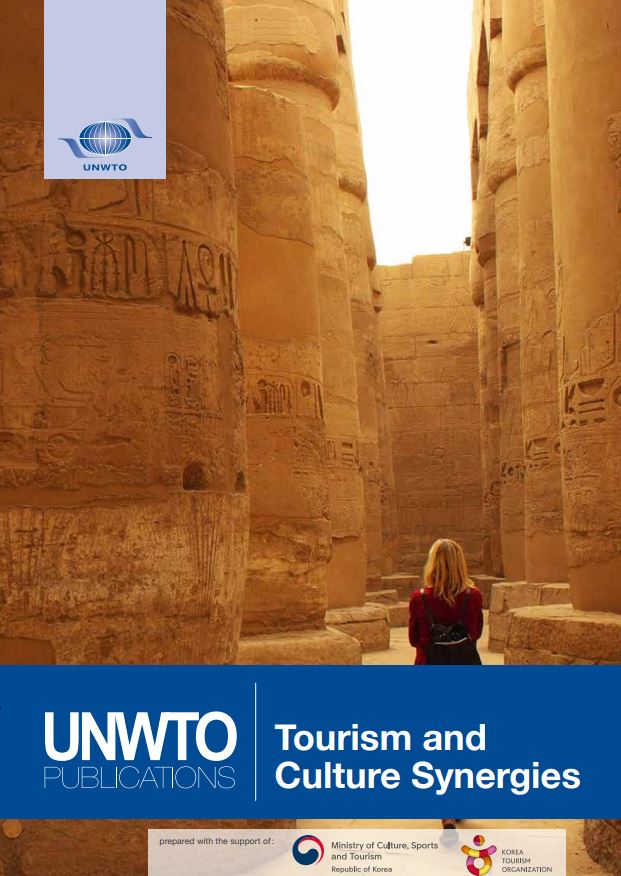
The UNWTO report on Tourism and Culture Synergies highlights the symbiotic relationship between tourism and culture and the interdependency of the two sectors. The report, undertaken through a survey of UNWTO member states and expert opinion, affirms that cultural tourism plays a major role in global tourism today. It also reveals that the sub-sector, in keeping with the changes to tourism as a whole, has been transformed by changing lifestyles, new forms of culture and creativity, and evolution and innovation in technology.
- https://www.e-unwto.org/doi/pdf/10.18111/9789284418978
Ban on public nudity among proposed Brevard tourism cultural grant modifications

Brevard County Commission Chair Jason Steele is recommending that a new restriction be put in place on county tourism grants to arts and cultural organizations ― no nudity at public events, or else you'll be disqualified from getting a grant.
Steele put forth his proposal at a recent meeting of the Brevard County Tourist Development Council , the tourism advisory board that Steele also chairs. Steele wants the proposal incorporated into the county guidelines for cultural grants — guidelines that must go to the County Commission for final approval.
"I'm only concerned about nudity and partial nudity and things of that nature that might be offensive to children and their families," Steele said.
During the TDC discussion of the issue, Steele didn't define "partial nudity" or cite any specific examples of this happening at events that received county cultural grants.
In a subsequent interview, Steele said he is not aware of any particular past instances, and is not targeting any specific events or organizations. But he wants to make sure that grant recipients abide by state and local laws, and wants to avoid situations "that potentially could harm children."
Cultural grants and other tourism grants are funded by Brevard County's 5% tourist development tax on hotel and motel rooms, vacation rentals and other short-term rentals.
Tourism cultural grants have been awarded by the county for years, but became controversial since August, when Florida Rep. Randy Fine, who represents South Brevard County, raised questions about a proposed $15,000 grant to the LGBTQ+ organization Space Coast Pride for its 2024 Pridefest event in downtown Melbourne.
Part of Fine's concerns stemmed from the Drag Queen Story Time that was a part of some previous Pridefest events. Drag Queen Story Time was not included in the 2023 Pridefest, held in Sept. 23.
Space Coast Pride eventually received approval for its grant for its Sept. 28, 2024, event. But not before the County Commission briefly withdrew funding for cultural grants altogether, affecting 25 arts and cultural organizations and events, as money was shifted to paying for ocean lifeguards and marketing expenses for the lifeguard program.
"There was a big issue before," Steele said, referring to the cultural grant program, while adding: "I'm not pointing my finger at anybody."
Steele said his proposed restriction is limited to events that are held in a public venue that can be viewed by passersby. He said it's not intended to censor performances by local theater groups or other entities that may qualify for grants ― events in which patrons purchase a ticket for the event, and parents can decide on their own whether to bring their children to the performance.
The Brevard County attorney's office has been working to come up with specific language for the County Commission to consider, reflecting Steele's wishes.
Space Coast Office of Tourism Executive Director Peter Cranis said the language in the grant guidelines "can't be too subjective."
The discussion of Steele's proposal came as the Tourist Development Council made a series of recommendation for the cultural grant program — as well as for two other grant programs funded by the tourist development tax ― for the 2024-25 budget year that begins Oct. 1.
Cultural funding reversal: 25 cultural entitles again in line for Brevard grants, reigniting Pridefest controversy
Cultural and sports grants
The TDC recommended that $605,000 be allocated for cultural grants, and that the grants be tied to the number of out-of-town visitors the events are expected to attract.
It also recommended $240,000 in grants for sporting events, with amounts tied to the number of hotel room-nights each events generates.
Cranis, however, pointed out that cultural grant funding would be contingent on what the County Commission decides to do related to funding of beach lifeguards. Money for the county's lifeguard program potentially could be shifted from the pool of tourist tax money designated for cultural programs.
"There may not be any money for cultural grants, period," Steele said.
Nevertheless, TDC member Julie Braga, a hotel general manager, maintained that the TDC needs to send the message to the County Commission that cultural grants are important, and that arts and cultural events help bring tourists to the Space Coast, thus generating tourist tax revenue.
Tourism + Lagoon Grant Programs
The TDC recommended that Tourism + Lagoon Grant Program — which is designed for tourism-related projects that benefit the Indian River Lagoon — be given $500,000 for grants in 2024-25.
The program previously was funded for up to $1 million for several years. This grant program was suspended for the 2023-24 budget year, as a result of the expenditure of all tourist-tax-generated beach funds in order to repair the South Beaches because of damages from several storms in late 2022.
Under the TDC's proposal for the 2024-25 budget year, grants in this program could be for up to $50,000 apiece.
The Tourism + Lagoon Grant Program guidelines will come before the County Commission for final approval on Tuesday. The cultural and sports programs guidelines will be on a future County Commission agenda, potentially in July.
Dave Berman is business editor at FLORIDA TODAY. Contact Berman at [email protected] , on X at @bydaveberman and on Facebook at www.facebook.com/dave.berman.54
- Go to the main menu
- Go to the mobile menu
- Go to main content
- Press Room Press Room
- Increase text size
- Decrease text size
- Add our RSS feed
China – Launch of the Franco-Chinese Year of Cultural Tourism (5 January 2024)
- Share on Twitter
- Share on Facebook
- Partager sur Linkedin
As was announced by Minister for Europe and Foreign Affairs Catherine Colonna and her Chinese counterpart, Wang Yi, during the November 24, 2023, high-level dialogue on people-to-people exchanges, the official launch of the Franco-Chinese Year of Cultural Tourism (ATC) is taking place today in China during the opening ceremony of the Harbin International Ice and Snow Sculpture Festival, with Olivia Grégoire, Minister Delegate for Small and Medium-Sized Enterprises, Trade, Small-Scale Industry, and Tourism, in attendance.
2024 will be marked by the celebration of the 60th anniversary of the establishment of diplomatic relations between France and China. In light of this, the Franco-Chinese Year of Cultural Tourism seeks to promote France as a tourist and cultural destination to a Chinese audience. The numerous events organized in over 30 Chinese cities throughout the year will highlight France’s tangible and intangible heritage, its vital art scene, and its cultural and creative industries. Prestigious French institutions such as the Palace of Versailles, the Mobilier National, and the Ballet of the Opéra national de Bordeaux will offer an exceptional series of events in order to introduce audiences to the French arts, whether classic or contemporary, in fields ranging from music to arts and crafts, filmmaking, and literature.
Additionally, the Franco-Chinese Year of Cultural Tourism aims to promote China as a tourist and cultural destination to a French audience.
Useful links
- France / China (in French)
- More information on the website of the ministry
- Embassy of France in China
- Air Transport
- Defense and Space
- Business Aviation
- Aircraft & Propulsion
- Connected Aerospace
- Emerging Technologies
- Manufacturing & Supply Chain
- Advanced Air Mobility
- Commercial Space
- Sustainability
- Interiors & Connectivity
- Airports & Networks
- Airlines & Lessors
- Safety, Ops & Regulation
- Maintenance & Training
- Supply Chain
- Workforce & Training
- Sensors & Electronic Warfare
- Missile Defense & Weapons
- Budget, Policy & Operations
- Airports, FBOs & Suppliers
- Flight Deck
- Marketplace
- Advertising
- Marketing Services
- Fleet, Data & APIs
- Research & Consulting
- Network and Route Planning
Market Sector
- AWIN - Premium
- AWIN - Aerospace and Defense
- AWIN - Business Aviation
- AWIN - Commercial Aviation
- Advanced Air Mobility Report - NEW!
- Aerospace Daily & Defense Report
- Aviation Daily
- The Weekly of Business Aviation
- Air Charter Guide
- Aviation Week Marketplace
- Route Exchange
- The Engine Yearbook
- Aircraft Bluebook
- Airportdata.com
- Airport Strategy and Marketing (ASM)
- CAPA – Centre for Aviation
- Fleet Discovery Civil
- Fleet Discovery Military
- Fleet & MRO Forecast
- MRO Prospector
- Air Transport World
- Aviation Week & Space Technology
- Aviation Week & Space Technology - Inside MRO
- Business & Commercial Aviation
- CAPA - Airline Leader
- Routes magazine
- Downloadable Reports
- Recent webinars
- MRO Americas
- MRO Australasia
- MRO Baltics & Eastern Europe Region
- MRO Latin America
- MRO Middle East
- Military Aviation Logistics and Maintenance Symposium (MALMS)
- Asia Aerospace Leadership Forum & MRO Asia-Pacific Awards
- A&D Mergers and Acquisitions
- A&D Programs
- A&D Manufacturing
- A&D Raw Materials
- A&D SupplyChain
- A&D SupplyChain Europe
- Aero-Engines Americas
- Aero-Engines Europe
- Aero-Engines Asia-Pacific
- Digital Transformation Summit
- Engine Leasing Trading & Finance Europe
- Engine Leasing, Trading & Finance Americas
- Routes Americas
- Routes Europe
- Routes World
- CAPA Airline Leader Summit - Airlines in Transition
- CAPA Airline Leader Summit - Americas
- CAPA Airline Leader Summit - Latin America & Caribbean
- CAPA Airline Leader Summit - Australia Pacific
- CAPA Airline Leader Summit - Asia & Sustainability Awards
- CAPA Airline Leader Summit - World & Awards for Excellence
- GAD Americas
- A&D Mergers and Acquisitions Conference (ADMA)
- A&D Manufacturing Conference
- Aerospace Raw Materials & Manufacturers Supply Chain Conference (RMC)
- Aviation Week 20 Twenties
- Aviation Week Laureate Awards
- ATW Airline Awards
- Program Excellence Awards and Banquet
- CAPA Asia Aviation Summit & Awards for Excellence
- Content and Data Team
- Aviation Week & Space Technology 100-Year
- Subscriber Services
- Advertising, Marketing Services & List Rentals
- Content Sales
- PR & Communications
- Content Licensing and Reprints
- AWIN Access
PRESS RELEASE: Routes Europe officially handed over to 2025 hosts

On the final day of the 2024 edition of the event, Aarhus Airport and VisitAarhus officially handed over the hosting responsibilities of Routes Europe to the Government of Spain, The Regional Ministry for Tourism, Culture and Sport of the Government of Andalucia, and Seville City Hall.
Routes Europe is held in varying venues and locations annually, bringing together key stakeholders from the route development community to drive air network growth across Europe and beyond. Airlines, airports, and tourism authorities are expected to take part in over 4,000 meetings at the 2025 edition of the event which will be influential in building high-value air service development partnerships.
Seville is recognised as a hub for tourism innovation and its efforts have allowed visitors to the city to remain practically unhindered by seasonality. Considered the fourth largest city in Spain, Sevilla Airport is crucial to the city’s thriving tourism industry, connecting to a total of 79 destinations served by 24 airlines.
The expansion project at Sevilla Airport allows the airport to serve 10 million passengers, increase services, and improve passenger experience. Connecting directly to a wide range of European destinations, the capital of Andalusia plans to communicate clear growth opportunities for new long-haul services. By hosting Routes Europe 2025, Seville will cement its position as a key gateway and an MRO capital of Southern Europe to the region’s leading airlines.
In its 2024 summer schedule, Sevilla Airport will welcome five new destinations served by three airlines including Ryanair services to Trieste, Birmingham, and Budapest. The Stockholm route will be served by Scandinavian Airlines (SAS) and Maderia by Air Nostrum.
Miguel Sanz, Director General of Tourspain, Government of Spain, said: “The recovery of connectivity is essential for tourism. Spain has fully fulfilled this recovery with Europe and forecasts regarding air capabilities in 2024 are very good. Participation in Routes is a key alliance for Turespaña, which has been proven effective, not only in terms of data, but in the effort in the developing of new routes and capacities, thanks to the direct and fluid relationship between airports and destinations. From Turespaña we offer special support to the organization of this great event, in a destination with enormous potential for connectivity, such as Seville. Without any doubt, it will boost the attributes of this city in tourism and air services, and will strengthen the international leadership position of our country in quality services.”
Arturo Bernal, Regional Minister for Tourism, Culture and Sport of the Government of Andalucía, said: “From the Government of Andalusia, we would like to express our gratitude to Routes Europe for the support and for choosing us. Seville is a reference in the aerospace sector at an international level, with the presence of important companies such as Airbus or the Aerospace Technology Park (Aeropolis), with more than ten thousand professionals linked directly or indirectly to this sector.”
Bernal added: “The growth of Seville airport is also an important aspect of improving Andalusia's connectivity, both domestic and international. The improvements being made in recent years will allow the airport's annual capacity to be increased to over ten million passengers, opening up new objectives for the future. The organization of an event such as Routes Europe 2025 will serve as an opportunity for Andalusia to show all its potential to all the professionals of the sector who will participate in this magnificent event.”
José Luis Sanz, Mayor of Sevilla, said: “Seville is a unique tourist attraction destination in Europe, connected with 21 countries and 82 airports, which links us with almost any destination in the world in just a little more than a stopover. Behind this there is a lot of work with the aim of continuing to improve Seville’s connectivity. The organization of an event like Routes Europe 2025 in our city is an honour and a responsibility. We have no doubt that it will be memorable and will position Seville at the highest level in the future of European air connectivity.”
By consistently uniting decision-makers from the European route development community, Routes Europe has made a real impact on the region's air services – over half of the region’s new routes are connected to meetings at the event. VPs and Heads of Network Planning from 90 of Europe’s leading carriers are expected to attend the event in Seville.
Steven Small, Director of Routes, said: “The development of new air connections has proven to contribute to economic growth and desirability of a destination. Hosting the 18th edition of Routes Europe will allow Seville to demonstrate the extensive potential of the destination and wider region to the region’s leading carriers, ultimately enhancing the number of air services and growing seat capacity to the destination. I am confident that the attractiveness of this dynamic city will support Seville’s objectives in the future.”
- Press Release
- Seville Airport
- Seville Tourist Board
Related Content

Stay Connected. Stay Informed. Grow Your Business.
UN Tourism | Bringing the world closer
Share this content.
- Share this article on facebook
- Share this article on twitter
- Share this article on linkedin
UN Tourism International Forum – Quintana Roo “Tourism and Culture: A Picture-Perfect Relationship”
- 19 Apr 2024
Quintana Roo and UN Tourism highlight the potential of audiovisual tourism: Current trends point to the greater dynamism of destinations that promote their cultural and tourism offerings through audiovisual content.
Organized by UN Tourism and the Government of the State of Quintana Roo through the Tourism Promotion Council of Quintana Roo – an entity that is an Affiliate Member of UN Tourism – the International Forum "Tourism and Culture: A Picture-Perfect Relationship" has put the spotlight on the potential of audiovisual tourism to boost the product offerings of destinations and its suitability for tourism marketing and promotion. Participants discussed the creation and implementation of public policies for promotion through audiovisual content, raising awareness among tourists about environmental and cultural protection through on-screen content, as well as the broader relationship between tourism, culture and creative industries.
"As part of the diversification of tourism offerings, audiovisual content can foster relationships and cultural affinity between different countries and communities. Both tourism and the audiovisual sector celebrate and promote culture, foster employment and offer opportunities for growth," said Zurab Pololikashvili, Secretary-General of UN Tourism.
Mara Lezama, Governor of the State of Quintana Roo, said: "I am proud to share that we are moving decisively towards a new era in tourism. We have consolidated public policies that promote the diversification of our tourism offerings, including the cultural segment as one of the fundamental pillars. Our Mexican Caribbean, with its paradisiacal landscapes, its cultural wealth and first-class tourism infrastructure, is positioned as an ideal setting to strengthen our offerings and position Quintana Roo as a leading player in the audiovisual field."
Both tourism and the audiovisual sector celebrate and promote culture, foster employment and offer opportunities for growth
The event was held within the framework of the 11th edition of the Xcaret Platino Awards for Ibero-American Cinema, the largest gathering of the Spanish-speaking audiovisual industry, and brought together experts from the world of tourism and culture.
In the framework of this event, UN Tourism signed a Memorandum of Understanding with the Xcaret Group – an Affiliate Member of the Organization – that lays the foundations for collaboration aimed at jointly promoting good practices in the preservation of cultural heritage, both tangible and intangible, and the welfare of local communities.
UN Tourism, working for the development of audiovisual tourism
UN Tourism has been expanding its work in the field of audiovisual tourism to respond to the increased demand for recommendations and guidance regarding the development of public policies and the sustainable development of this tourism segment. The recent joint UN Tourism – NETFLIX study " Cultural Affinity and Screen Tourism – The Case of Internet Entertainment Services " offers policymakers and tourism sector actors valuable information and recommendations to develop and implement policies that make their destinations attractive to audiovisual producers. Likewise, it aims to help in the formulation of strategies focused on promoting tourism and the consumption of local culture, and investing in training and education to develop the film sector and local creative industries, in order to ensure a high level of talent, infrastructure and production capacity.
Destination Quintana Roo
The State of Quintana Roo continues to strengthen its position as a tourism destination, thanks to large-scale projects such as the launch of the Mayan Train. Quintana Roo received a record number of tourists in 2023, with more than 20 million, and is taking actions to safeguard its cultural and natural heritage, in line with its Quintana Roo 2030 Sustainable Tourism Master Plan.
11th edition of the Xcaret Platino Awards
With the aim of promoting, disseminating and bringing Ibero-American culture and film-making closer together, the Xcaret Platino Awards for Ibero-American Cinema annually brings together the most prominent figures of the Latin American audiovisual industry and recognizes the best audiovisual productions in Spanish and Portuguese.
Related links
- Download News Release on PDF
- UN Tourism Affiliate Members
Related Content
Resilience through diversity and investments the focus ..., unwto in brazil to begin work on first regional office ..., unwto launches tourism investment guidelines for chile, the regional corporation of tourism of the valparaíso r....

IMAGES
VIDEO
COMMENTS
This webpage provides UN Tourism resources aimed at strengthening the dialogue between tourism and culture and an informed decision-making in the sphere of cultural tourism. It also promotes the exchange of good practices showcasing inclusive management systems and innovative cultural tourism experiences.. About Cultural Tourism. According to the definition adopted by the UN Tourism General ...
The World Tourism Organisation (WTO) (1985) broadly define cultural tourism as the movements of persons who satisfy the human need for diversity, tending to raise the cultural level of the individual and giving rise to new knowledge, experience and encounters. Cultural tourism is commonly associated with education in this way, some describing ...
Cultural tourism in Egypt in the 19th century. Tourists at Hearst Castle, California. Tourists taking pictures at the khmer Pre Rup temple ruins, an example of cultural tourism.. Cultural tourism is a type of tourism in which the visitor's essential motivation is to learn, discover, experience and consume the cultural attractions and products offered by a tourist destination.
All Regions; 14 Mar 18 Tourism and Culture Synergies The UNWTO report on Tourism and Culture Synergies highlights the symbiotic relationship between tourism and culture and the interdependency of the two sectors. The report, undertaken through a survey of UNWTO member states and expert opinion, affirms that cultural tourism plays a major role in global tourism today.
Culture has become a key product in the international tourism market, with tourists engaged in cultural activities accounting for 40% of international arrivals in 2016 (UNWTO, Citation 2016).Destinations build on cultural supplies to conform their tourism offer, given the interest of visitors for cultural attractions (OECD, Citation 2009).City tourism relies on culture as a major product (ETC ...
The dynamic relationship between tourism and culture 65. 3.2 . Defining and measuring cultural tourism 70. 3.2.1 . Problems of definition 70. 3.2.2 . The size of the global cultural tourism market 74. 3.2.3 . Cultural tourism typologies 77. 3.2.4 . Tourism and cultural synergies in space and time 79. 3.3 . Tourism and culture partnership 81. 3.3.1
The growing body of cultural tourism scholarship is confirmed by a literature search on the term "cultural tourism" on Google Scholar. As Fig. 1 indicates, cultural tourism sources have risen from less than 100 in 1990 to over 6000 in 2016. Growth was particularly sharp between 2005 and 2015, and cultural tourism publications have risen as a proportion of all tourism publications, to reach ...
The 2019 UNWTO/UNESCO World Conference on Culture and Tourism is the fourth edition of the conference with previous editions held in Istanbul, Turkey in 2018, Muscat, Oman in 2017 and Siem Reap, Cambodia in 2015. The fourth edition is kindly hosted by the Japan Tourism Agency, the Japanese Agency for Cultural Affairs, Kyoto Prefecture and Kyoto ...
Tourism and Culture Synergies. The UNWTO report on Tourism and Culture Synergies highlights the symbiotic relationship between tourism and culture and the interdependency of the two sectors. The report, undertaken through a survey of UNWTO member states and expert opinion, affirms that cultural tourism plays a major role in global tourism today.
In discussing the relationship between tourism and culture, it is said that "the convergence between tourism and culture, and the increasing interest of visitors in cultural experiences, bring unique opportunities as well as complex challenges for the tourism sector" (UNWTO 2021).The challenges include the accelerated commercialization of culture which causes overtourism, the crisis of ...
Tourism culture may best be seen as a nexus between host culture and guest culture (see Fig. 3).On the one hand host culture is that which is indigenous to a locale: its particular arts and crafts, language, traditional roles, festivals, and ways of doing things (Simpson, 1993, Smith, 2009, Tapper, 2001, Tsartas, 1992).In the case of small islands, these often host unusually rich and ...
Cultural tourism is a form of travel that focuses on exploring and appreciating the unique traditions, history, and practices of a place. It is not just about visiting museums or attending festivals, but also delving deeply into the everyday aspects of local life. Authentic local food, local markets, and even casual chats with locals are an ...
The unique Cultural Heritage of the World tells the story of humanity itself. It is a window into who we are as people and must, therefore, be protected and preserved for all generations to come. Becoming a member of the 'World Tourism Association for Culture and Heritage' will help us succeed in this critical mission Join WTACH.org
Tourism, Culture & Communication (TCC) is the longest established international refereed journal that is dedicated to the cultural dimensions of tourism. The editors adopt a purposefully broad scope that welcomes readers and contributors from diverse disciplines and who are receptive in a wide variety of research methods. While potential ...
So, mobility is at the core of tourism. In Australia, for example, in 2013 75.8 million people travelled domestically for an overnight trip - spending 283 million visitor nights and $51.5 ...
Cultural tourism is a travel and tourism trend that is here to stay. With more and more accessibility to the world and the people in it, there is peak interest in being able to immersively travel. Peaks an interest to immerse yourself in a particular culture. Creates meanings, stories and understanding between host and guest.
Cultural tourism is a significant and growing aspect of the global tourism industry. The United Nations World Tourism Organization (UNWTO) defines cultural tourism as the movement of people to cultural attractions away from their normal residence, with the intention of gathering new information and experiences that satisfy their cultural needs. It encompasses various activities undertaken by ...
The cultural impact of tourism is perhaps one of the most profound and direct effects of tourism on a destination. It influences the local traditions, customs, and identity of a community. The interactions between tourists and the local culture can result in both positive and negative outcomes.
The UNWTO report on Tourism and Culture Synergies highlights the symbiotic relationship between tourism and culture and the interdependency of the two sectors. The report, undertaken through a survey of UNWTO member states and expert opinion, affirms that cultural tourism plays a major role in global tourism today. It also reveals that the sub ...
Journal metrics Editorial board. Journal of Tourism and Cultural Change ( JTCC ) is a peer-reviewed, transdisciplinary and transnational journal. It focuses on critically examining the relationships, tensions, representations, conflicts and possibilities that exist between tourism/travel and culture/cultures in an increasingly complex global ...
According to the first UNWTO World Tourism Barometer of the year, international tourism ended 2023 at 88% of pre-pandemic levels, with an estimated 1.3 billion international arrivals. The multi-dimensional nature of the tourism sector, combined with the dynamics of the source of investment capital presents a complex picture for understanding ...
Tourism culture may best be seen as a nexus between host culture and guest culture (see Fig. 3). On the one hand host culture is that which is indigenous to a locale: its particular arts and crafts, language, traditional roles, festivals, and ways of doing things (Simpson, 1993, Smith, 2009, Tapper, 2001, Tsartas, 1992). In the case of small ...
Rich Cultural Experiences in Cork City. Cork City is a culturally rich destination that offers visitors a variety of experiences. These include historic buildings and narrow old town streets, traditional Irish music sessions, the Crawford Art Gallery, and Irish food at the English Market. Cultural tourism is a means of promoting strong and ...
Massachusetts is gearing up to give its tourism sector a multi-million-dollar boost. The Healey-Driscoll Administration unveiled a new grant program, part of a larger economic initiative, set to ...
The Owensboro Museum of Fine Arts to a fantastic collections of art and antiquities from around the world. Since 1977, Owensboro Museum of Fine Art has connected people to the culture of artistic expression. More than 4,000 individual pieces representing diverse time periods, genres and mediums are on display in this free admission museum.
Tourism cultural grants have been awarded by the county for years, but became controversial since August, when Florida Rep. Randy Fine, who represents South Brevard County, raised questions about ...
In light of this, the Franco-Chinese Year of Cultural Tourism seeks to promote France as a tourist and cultural destination to a Chinese audience. The numerous events organized in over 30 Chinese cities throughout the year will highlight France's tangible and intangible heritage, its vital art scene, and its cultural and creative industries. ...
The Ministry of Tourism, Culture and Sport proudly celebrates the conclusion of this year's Kappa Classic, held at the Flora Duffy Stadium over the weekend. As Bermuda's largest youth football tournament, the Kappa Classic brought together numerous young athletes and teams across the Island, showcasing their talents and passion for the sport.
Arturo Bernal, Regional Minister for Tourism, Culture and Sport of the Government of Andalucía, said: "From the Government of Andalusia, we would like to express our gratitude to Routes Europe ...
Americas. 19 Apr 2024. Quintana Roo and UN Tourism highlight the potential of audiovisual tourism: Current trends point to the greater dynamism of destinations that promote their cultural and tourism offerings through audiovisual content. Organized by UN Tourism and the Government of the State of Quintana Roo through the Tourism Promotion ...